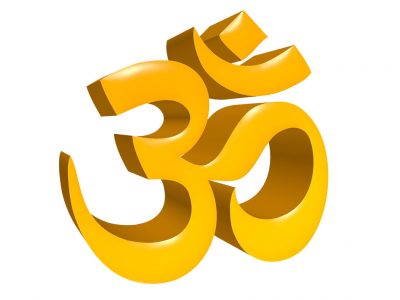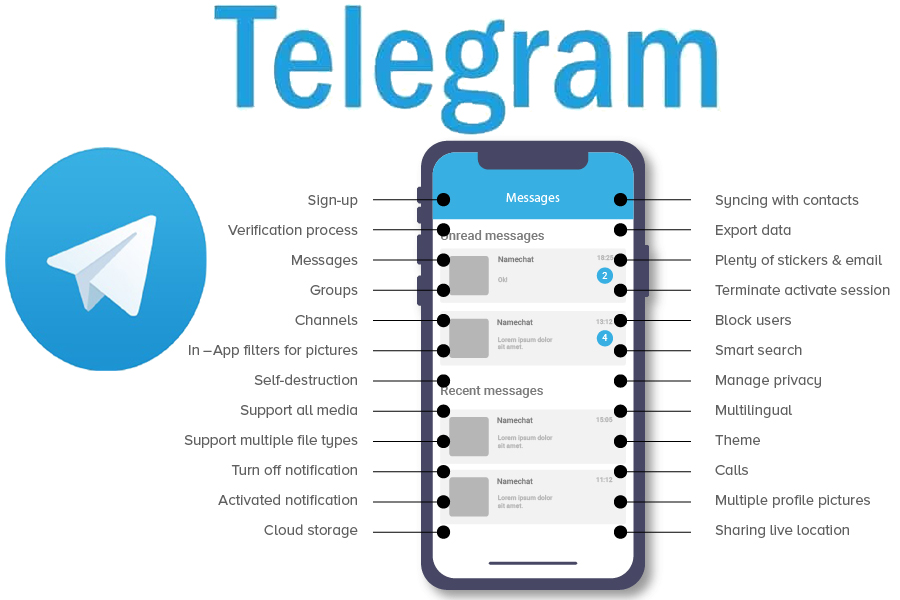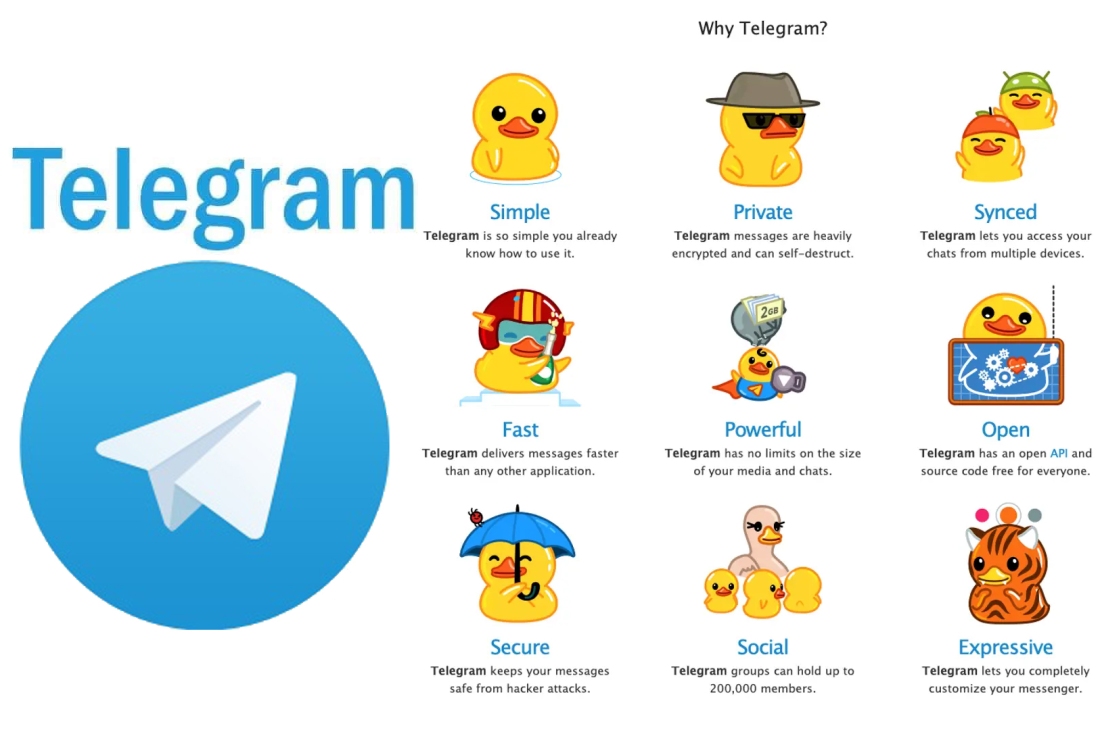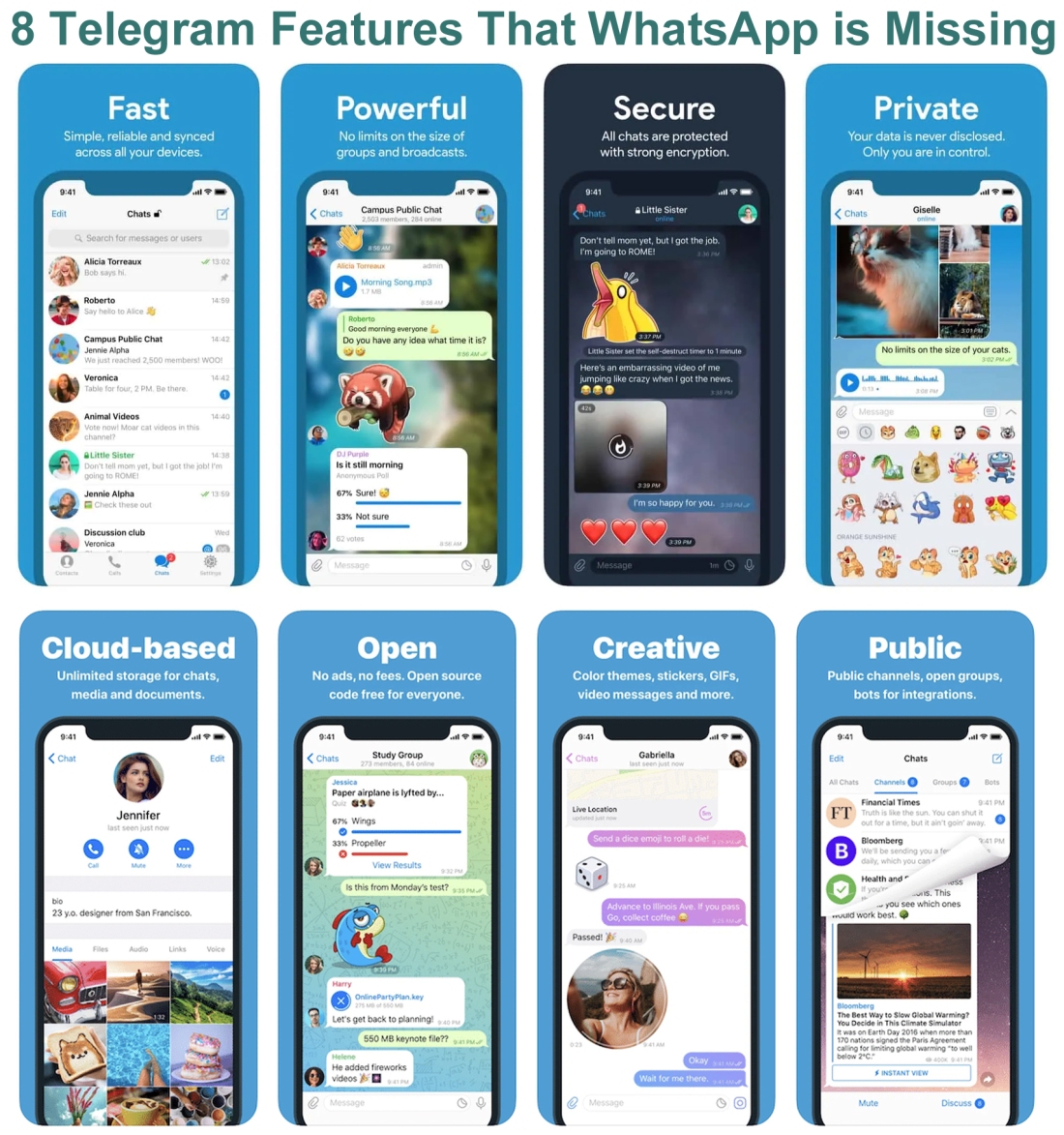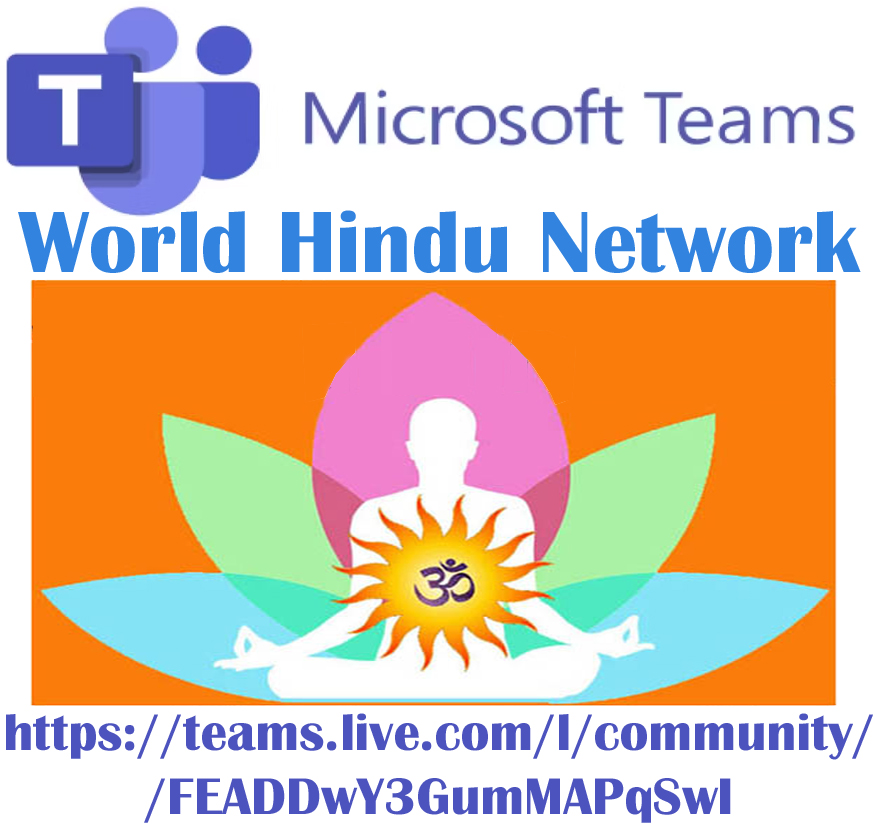Join us on World Hindu & Health Instruction ( https://t.me/WorldHinduHealth )
Contents:
1. History
2. Muhurath
3. Calendar
4. Significance
5. Festival of Colours
6. Puja Process
7. Rituals
8. Tradition
9. Celebration
10. The Evening of Bonfires
11. Celebrate an Eco Friendly Hooli
12. Recipes with video plays
13. Tradition of Bhang
14. Mela
15. Bhajan
16. Safety Tips
17. Regional Names
18. Related Festivals
19. More Video Plays and more Pictures.
Hooli is considered as one of the most revered and celebrated festivals of India and it is celebrated in almost every part of the country. It is also sometimes called as the “festival of love” as on this day people get to unite together forgetting all resentments and all types of bad feeling towards each other. The great Indian festival lasts for a day and a night, which starts in the evening of Purnima or the Full Moon Day in the month of Falgun. It is celebrated with the name Holika Dahan or Choti Hooli on first evening of the festival and the following day is called Hooli. In different parts of the country it is known with different names.
The vibrancy of colours is something that brings in a lot of positivity in our lives and Hooli being the festival of colours is actually a day worth rejoicing. Hooli is a famous Hindu festival that is celebrated in every part of India with utmost joy and enthusiasm. The ritual starts by lighting up the bonfire one day before the day of Hooli and this process symbolises the triumph of good over the bad. On the day of Hooli people play with colours with their friends and families and in evening they show love and respect to their close ones with Abeer.
1. History of Hooli
Join us on World Hindu & Health Instruction ( https://t.me/WorldHinduHealth )
Hooli is an ancient festival of India and was originally known as ‘Holika’. The festivals finds a detailed description in early religious works such as Jaimini’s Purvamimamsa-Sutras and Kathaka-Grhya-Sutras. Historians also believe that Hooli was celebrated by all Aryans but more so in the Eastern part of India.
It is said that Hooli existed several centuries before Christ. However, the meaning of the festival is believed to have changed over the years. Earlier it was a special rite performed by married women for the happiness and well-being of their families and the full moon (Raka) was worshiped.
Calculating the Day of Hooli
There are two ways of reckoning a lunar month- ‘purnimanta’ and ‘amanta’. In the former, the first day starts after the full moon; and in the latter, after the new moon. Though the amanta reckoning is more common now, the purnimanta was very much in vogue in the earlier days.
According to this purnimanta reckoning, Phalguna purnima was the last day of the year and the new year heralding the Vasantha-ritu (with spring starting from next day). Thus the full moon festival of Holika gradually became a festival of merrymaking, announcing the commencement of the spring season. This perhaps explains the other names of this festival – Vasantha-Mahotsava and Kama-Mahotsava.
Reference in Ancient Texts and Inscriptions
Besides having a detailed description in the Vedas and Puranas such as Narad Purana and Bhavishya Purana, the festival of Hooli finds a mention in Jaimini Mimansa. A stone incription belonging to 300 BC found at Ramgarh in the province of Vindhya has mention of Holikotsav on it. King Harsha, too has mentioned about holikotsav in his work Ratnavali that was written during the 7th century.
The famous Muslim tourist – Ulbaruni too has mentioned about holikotsav in his historical memories. Other Muslim writers of that period have mentioned, that holikotsav were not only celebrated by the Hindus but also by the Muslims.
Reference in Ancient Paintings and Murals
The festival of Hooli also finds a reference in the sculptures on walls of old temples. A 16th century panel sculpted in a temple at Hampi, capital of Vijayanagar, shows a joyous scene of Hooli. The painting depicts a Prince and his Princess standing amidst maids waiting with syringes or pichkaris to drench the Royal couple in coloured water.
A 16th century Ahmednagar painting is on the theme of Vasanta Ragini – spring song or music. It shows a royal couple sitting on a grand swing, while maidens are playing music and spraying colours with pichkaris.
There are a lot of other paintings and murals in the temples of medieval India which provide a pictoral description of Hooli. For instance, a Mewar painting (circa 1755) shows the Maharana with his courtiers. While the ruler is bestowing gifts on some people, a merry dance is on, and in the center is a tank filled with coloured water. Also, a Bundi miniature shows a king seated on a tusker and from a balcony above some damsels are showering gulal (coloured powders) on him.
Legends and Mythology
Join us on World Hindu & Health Instruction ( https://t.me/WorldHinduHealth )
In some parts of India, specially in Bengal and Odisha, Hooli Purnima is also celebrated as the birthday of Shri Chaithanya Mahaprabhu (A.D. 1486-1533). However, the literal meaning of the word ‘Hooli’ is ‘burning’. There are various legends to explain the meaning of this word, most prominent of all is the legend associated with demon king Hiranyakashyap.
Hiranyakashyap wanted everybody in his kingdom to worship only him but to his great disappointment, his son, Prahlad became an ardent devotee of Lord Naarayana. Hiaranyakashyap commanded his sister, Holika to enter a blazing fire with Prahlad in her lap. Holika had a boon whereby she could enter fire without any damage on herself. However, she was not aware that the boon worked only when she enters the fire alone. As a result she paid a price for her sinister desires, while Prahlad was saved by the grace of the god for his extreme devotion. The festival, therefore, celebrates the victory of good over evil and also the triumph of devotion.
Legend of Lord Krishna is also associated with play with colours as the Lord started the tradition of play with colours by applying colour on his beloved Radha and other gopis. Gradually, the play gained popularity with the people and became a tradition.
There are also a few other legends associated with the festival – like the legend of Shiva and Kaamadeva and those of Ogress Dhundhi and Pootana. All depict triumph of good over evil – lending a philosophy to the festival.
VIDEO PLAY # 1
(Full Screen on the video)
Contd…
Telegram provides unlimited cloud storage. This means all your text messages, images media files & documents will be saved on their cloud without losing any data, you don’t need to worry about backup & restore. Telegram Private Groups cannot be found with an in-app search. The group is private, after all that you can use the 2,00,000 member limit fully. Telegram Channels are a tool for broadcasting public (or) private messages to large audiences, similarly as you do on Twitter or Facebook Page. In fact, channels can have an unlimited number of subscribers. Telegram Private Channels cannot be found with an in-app search. Group video calls on Telegram allow 30 users to broadcast from their camera as well as their screens. This can now be watched by 1,000 people at once (updated by 1st August 2021). Users can hold anything event online, from lectures to concerts and everything in between, similarly as Zoom or Microsoft Teams or Google Meet.
Join Us
| Telegram Channel | Twitter | LinkedIn Page | Microsoft Teams | Other Social | WhatsApp Channel | Blogger |
2. Hooli Muhurath
The festival of colours observed in India where everyone rejoices equally is none other than Hooli. On this day, people forget their normal day to day life, and play with vibrant colours, adding life and happiness to their own as well as other’s lives. Hooli marks the advent of Spring after a harsh winter. It is celebrated on the full moon night of the month of Phalgun as per the Indian Calendars.
2024: 24 March to 25 March
Holi Rangawali:
It is not only celebrated by playing with colours, but people also make awesome dishes, especially sweets. And ‘Bhaang’ is the famous drink for this occasion which after drinking, makes people enjoy the festival even more. The whole essence of Hooli marks the air with vibrancy and joy. The roads are filled with colour and so are the people. It is one of the festivals, that is celebrated with the sole purpose of having fun.
History Behind Hooli:
It is said that Lord Krishna when he was young went to his mother and asked, why was he dusky while his lover Radha remained fair skinned. His mother, Yasodha Maa, in return asked him to go to Radha and apply colour on her so that there wouldn’t be any more colour contrast between them. This was followed and from then, the festival of applying colours on each other began as Hooli.
Holi begins by observing Holika Dahan. The story behind Holika Dahan is another interesting one.
According to the Puranas, the king of demons, Hiranyakashyap (the king of the demons) saw that his son Prahlad became a devotee of Lord Vishnu. This angered him a lot. As a means of punishment for his son, he asked Holika, his sister to sit on fire with his son in her lap. Supposedly, Holika was blessed that she wouldn’t be harmed by fire. But the events that occurred were quite the opposite. Holika was burnt to ashes while Prahlad emerged out unharmed. So, while remembering this day, Holika Dahan is observed. The best muhurant for Holika Dahan would be during the Pradosh time of Poornima.
It is commonly observed nowadays by burning of an effigy that marks the destruction of evil and preservation of goodness.
After that, people celebrate Hooli by applying colours on others, sometimes gulal is used, and sometimes gulal mixed with water are either poured down from a bucket or sprayed using a water gun.
Hooli is celebrated for wishing a good and prosperous life ahead. Like any Hindu festival, it has great significance in the way of life. Marking the beginning of spring after winter is like a promise for a better fruitful year ahead.
A. Simple: Telegram is so simple you already know how to use it.
B. Private: Telegram messages are heavily encrypted and can self-destruct.
C. Synced: Telegram lets you access your chats from multiple devices.
D. Fast: Telegram delivers messages faster than any other application such WhatsApp, Signal etc.
E. Powerful: Telegram has no limits on the size of your media and chats.
F. Open: Telegram has an open API and source code free for everyone.
G. Secure: Telegram keeps your messages safe from hacker attacks.
H. Expressive: Telegram lets you completely customise your messenger.
Join Us
| Telegram Channel | Twitter | LinkedIn Page | Microsoft Teams | Other Social | WhatsApp Channel | Blogger |
3. Hooli Calendar
Hooli is one of the major festivals of India and is celebrated on different dates every year. This great Indian festival is observed at the end of the winters in the month of March after the full Moon. A day before Hooli a large bonfire is lit that helps in burning out the evil spirits and that whole process is called as Holika Dahan.
Detailed information on Hooli Dates
Timing: It is highly prohibited to perform the bonfire of the Holika Dahan before the Sunset as that can be not really be the cause for bringing in a lot of misfortune in life. It must be performed on a specific time on the Purnima Tithi only after the Sunset. It is very important to choose a good Muhurat in order to perform the ritual of Holika Dahan. Ideally it must be performed on Pradosh Kaal when the night and day are believed to meet each other.
It is prohibited to perform the ritual of Holika Dahan until the Bhadra Tithi. Also, the the exact time for the same varies from state to state all over in India.
2026: 3rd March, Tuesday
2025: 13th March, Thursday
2024: 24th March, Sunday
2023: 7th March, Tuesday
2022: 18th March, Friday
2021: 28th March, Sunday
2020: 9th March, Monday
2019: 20th March, Wednesday
2018: 1st March, Thursday
2017: 12th March, Sunday
2016: 23rd March, Wednesday
2015: 5th March, Thursday
2014: 16th March, Sunday
2013: 26th March, Tuesday
2012: 7th March, Wednesday
2011: 19th March, Saturday
2010: 28th February, Sunday
2009: 10th March, Tuesday
2008: 21st March, Friday
2007: 3rd March, Saturday
2006: 14th March, Tuesday
2005: 25th March, Friday
2004: 6th March, Saturday
2003: 17th March, Monday
2002: 28th March, Thursday
2001: 9th March, Friday
2000: 19th March, Sunday
1999: 1st March, Monday
Contd…
Join Us
| Telegram Channel | Twitter | LinkedIn Page | Microsoft Teams | Other Social | WhatsApp Channel | Blogger |
4. Significance of Hooli
Join us on World Hindu & Health Instruction ( https://t.me/WorldHinduHealth )
In spite of being such a colourful and gay festival, there are various aspects of Hooli which makes it so significant for our lives. Though they might not be so apparent but a closer look and a little thought will reveal the significance of Hooli in more ways than meets the eyes. Ranging from socio-cultural, religious to biological there is every reason why we must heartily enjoy the festival and cherish the reasons for its celebrations.
So when, its time for Hooli, please don’t hold yourself back and enjoy the festival to the hilt by participating with full enthusiasm in every small tradition related to the festival.
Mythological Significance
Hooli gets us close to our religion and our mythology as it is essentially the celebration of various legends associated with the festival.
Foremost is the legend of Prahlad and Hiranyakshyap. The legend says there once lived a devil and powerful king, Hiranyakshyap who considered himself a god and wanted everybody to worship him. To his great ire, his son, Prahlad began to worship, Lord Vishnu. To get rid of his son, Hiranyakshyap asked his sister, Holika to enter a blazing fire with Prahlad in her lap, as she had a boon to enter fire unscathed. Legend has it that Prahlad was saved for his extreme devotion for the lord while Holika paid a price for her sinister desire. The tradition of burning Holika or the ‘Holika dahan’ comes mainly from this legend.
Hooli also celebrates the legend of Radha and Krishna which describes the extreme delight, Krishna took in applying colour on Radha and other gopis. This prank of Krishna later, became a trend and a part of the Hooli festivities.
Mythology also states that Hooli is the celebration of death of Ogress Pootana who tried to kill infant, Krishna by feeding poisonous milk to it.
Another legend of Hooli which is extremely popular in Southern India is that of Lord Shiva and Kaamadeva. According to the legend, people in south celebrate the sacrifice of Lord of Passion Kaamadeva who risked his life to revoke Lord Shiva from meditation and save the world.
Also, popular is the legend of Ogress Dhundhi who used to trouble children in the kingdom of Raghu and was ultimately chased away by the pranks of the children on the day of Hooli. Showing their belief in the legend, children till date play pranks and hurl abuses at the time of Holika Dahan.
Cultural Significance
Celebration of the various legends associated with Hooli reassure the people of the power of the truth as the moral of all these legends is the ultimate victory of good over evil. The legend of Hiranyakashyap and Prahlad also points to the fact that extreme devotion to god pays as god always takes his true devotee in his shelter.
All these legends help the people to follow a good conduct in their lives and believe in the virtue of being truthful. This is extremely important in the modern day society when so many people resort to evil practices for small gains and torture one who is honest. Hooli helps the people to believe in the virtue of being truthful and honest and also to fight away the evil.
Besides, hooli is celebrated at a time of the year when the fields are in full bloom and people are expecting a good harvest. This gives a people a good reason to rejoice, make merry and submerge themselves in the spirit of Hooli.
Social Significance
Hooli helps to bring the society together and strengthen the secular fabric of our country. For, the festival is celebrated by non-Hindus also as everybody like to be a part of such a colourful and joyous festival.
Also, the tradition of the Hooli is that even the enemies turn friends on Hooli and forget any feeling of hardship that may be present. Besides, on this day people do not differentiate between the rich and poor and everybody celebrate the festival together with a spirit of bonhomie and brotherhood.
In the evening people visit friends and relatives and exchange gifts, sweets and greetings. This helps in revatalising relationships and strengthening emotional bonds between people.
Biological Significance
It is interesting to note that the festival of Hooli is significant for our lives and body in many other ways than providing joy and fun.
We also need to thank our forefathers who started the trend of celebrating Hooli at such a scientifically accurate time. And, also for incorporating so much fun in the festival.
As Hooli comes at a time of the year when people have a tendency to feel sleepy and lazy. This is natural for the body to experiences some tardiness due to the change from the cold to the heat in the atmosphere. To counteract this tardiness of the body, people sing loudly or even speak loudly. Their movements are brisk and their music is loud. All of this helps to rejuvenate the system of the human body.
Besides, the colours when sprayed on the body have a great impact on it. Biologists believe the liquid dye or Abeer penetrates the body and enters into the pores. It has the effect of strengthening the ions in the body and adds health and beauty to it.
There is yet another scientific reason for celebrating the Hooli, this however pertains to the tradition of Holika Dahan. The mutation period of winter and spring, induces the growth of bacteria in the atmosphere as well as in the body. When Holika is burnt, temperature rises to about 145 degrees Fahrenhiet. Following the tradition when people perform Parikrima (circumambulation or going around) around the fire, the heat from the fire kills the bacteria in the body thus, cleansing it.
The way Hooli is celebrated in south, the festival also promotes good health. For, the day after the burning of Holika people put ash (Vibhuti) on their forehead and they would mix Chandan (sandalpaste) with the young leaves and flowers of the Mango tree and consume it to promote good health.
Some also believe that play with colours help to promote good health as colours are said to have great impact on our body and our health. Western-Physicians and doctors believe that for a healthy body, colours too have an important place besides the other vital elements. Deficiency of a particular colour in our body causes ailment, which can be cured only after supplementing the body with that particular colour.
People also clean-up their houses on Hooli which helps in clearing up the dust and mess in the house and get rid of mosquitoes and others pests. A clean house generally makes the residents feel good and generate positive energies.
Contd…
Join Us
| Telegram Channel | Twitter | LinkedIn Page | Microsoft Teams | Other Social | WhatsApp Channel | Blogger |
5. Festival of Colours
Join us on World Hindu & Health Instruction ( https://t.me/WorldHinduHealth )
The festival of colours is Hooli, it is vibrant and filled with beautiful colours. Hooli is considered as one of major festival in India. It is celebrated in the month of Phalgun on full moon day according to Hindu calendar.
With the onset of spring, northern India gets into the colourful mood of Hooli. This festival also denotes celebration due to good harvests and land fertility. This colourful festival also celebrates the eternal love of Radha and Krishna. This festival is celebrated in a grand style in the city of Mathura and Vrindavan. These are two important cities which are deeply associated to Lord Krishna.
The festival of colours teaches humankind to transcend above the caste and creed. It is a festival to forget old grievances and meeting others with great warmth & high spirit. This festival begins with lightening of bonfire on Hooli eve. Next day, people play Hooli with different types of colours, abirs and gulals. They greet each other with Shubh Hooli i.e. Happy Hooli and send warm wishes of the festival.
Kids and adults come out of their house and smear each other with bright shades of gulal. Colourful waters are sprinkled on people and kids are found playing with pichkari and water balloons. People exchange sweets, Thandai and snacks among neighbours and friends. Popular Hooli sweets are Gujiya, Ladoo, Burfi and Imarti etc. Indian festive celebration is incomplete without delicious sweets.
People also dance in the beats of Hooli songs and popular folka’s music. Exchange of hooli gifts, snack hampers, dry fruits and greeting cards are also found.
Hooli festival has religious and historical significance in Hindu texts. There was very popular mythological legend about king ‘Hiranyakashyapu’ and his son ‘Prahlad’. The devil king used to hate God esp. Lord Vishnu and threatened people in his kingdom to stop worshipping him. But this King’s own son was a verdant devotee of Lord Vishnu.
He denied to obey his father command and this infuriated the king. Hiranyakashyapu instructed his sister ‘Holika’ to pulverise his own son Prahald. Holika had the boon to being immune to fire. She was absolutely sure that she would not get affected by the blazing fire and took seat on the fire with young Prahlad. Lord Vishnu rendered protection of his devotee Prahlad and he was alive but Holika was burnt into death. There of, the festival of Hooli signifies the victory of good over evil.
Today, the festival of colour gives us an opportunity to reunite with family, friends and dear ones. This festivity brings colours into the life of people, when they can take a break from their monotonous life and share the joy with loved ones. Everyone plays Hooli by chasing each other and throwing bright gulal and coloured water.
VIDEO PLAY # 2
(Full Screen on the video)
Contd…
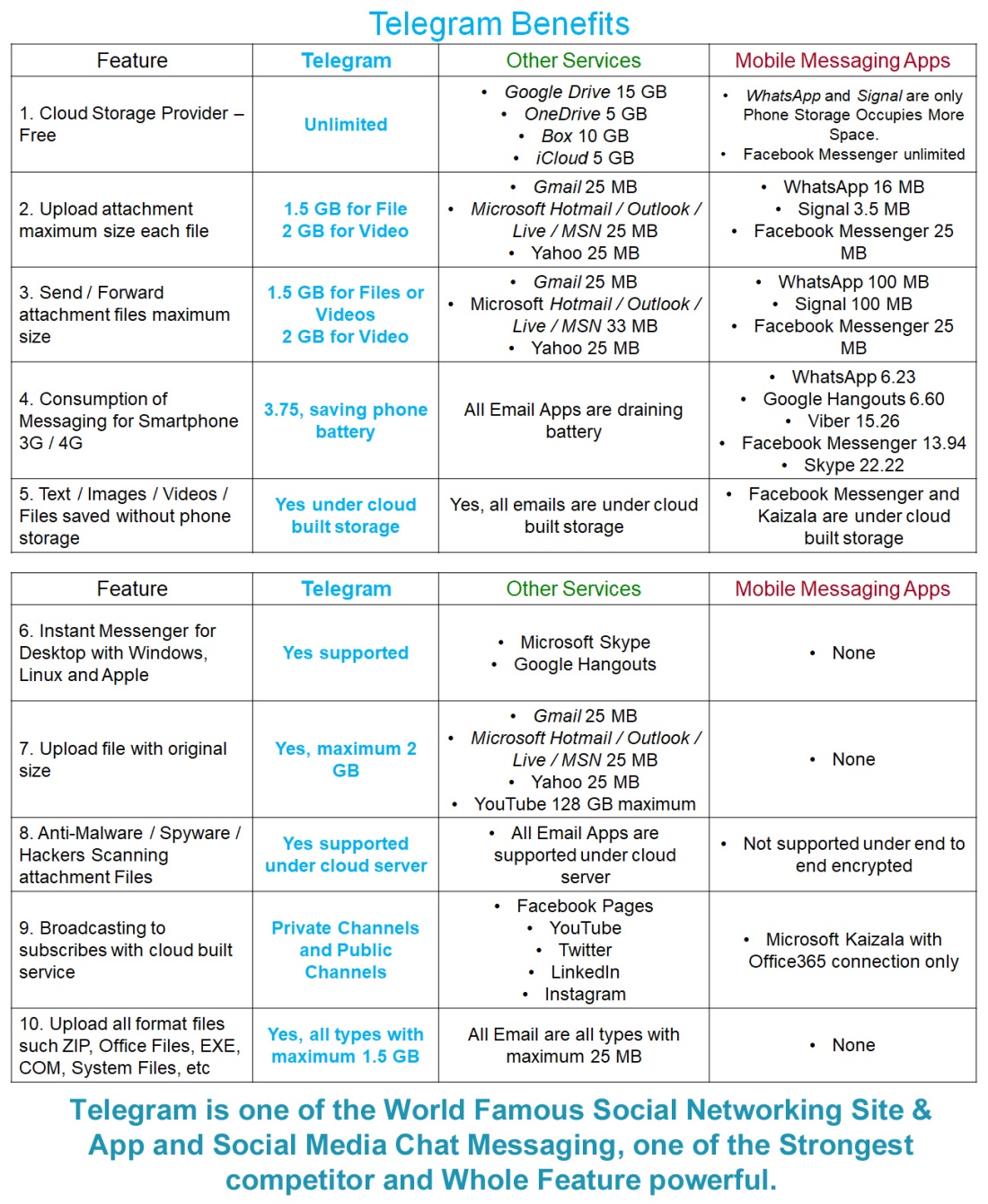
Join Us
| Telegram Channel | Twitter | LinkedIn Page | Microsoft Teams | Other Social | WhatsApp Channel | Blogger |
6. Hooli Puja Process
Join us on World Hindu & Health Instruction ( https://t.me/WorldHinduHealth )
Hooli Puja takes place a day before the Hooli Festival. This day is called as ‘Holika Dahan’. There is no special puja performed on the Hooli day. This day is only meant for celebrations and play of colours. Holika Dahan is the major ritual performed at the time of Hooli which is also considered an important Hooli Puja. People light bonfires on the eve of Hooli festival to celebrate the victory of ‘good’ over ‘bad’ which is called Holika Dahan.
Hooli Puja Process or Holika Dahan Process
Join us on World Hindu & Health Instruction ( https://t.me/WorldHinduHealth )
Holika Dahan preparations begin almost 40 days before the festival. People start gathering woods on the important crossroads of the city. Hooli Puja or Holika takes place on an auspicious time in the evening a day before the Hooli festival. Given below are the steps and rituals for the Hooli Puja:
- Hooli Puja can be performed at any place.
- A log of wood is kept at a prominent public place on the Vasant Panchami day.
- People extend the log centre with twigs, dried leaves, branches of trees and other combustible material.
- On the day of Holika Dahan, an effigy of Holika and Prahlad is placed on the huge heap of woods.
- Effigy of Holika is made of combustible material while Prahlad’s effigy is made of non-combustible material.
- On the eve of Hooli, the heap is set alight and the people chant Rakshoghna Mantras of the Rig Veda to cast away the evil spirits.
- Left over ashes are collected by people next morning. These ashes are considered holy and are smeared on the limbs of the body as Hooli Prasad.
- Smearing of body limbs is an act of purification.
Hooli Puja is performed in a different manner in some communities. Marwari women offer Hooli puja in the afternoon and evening i.e. before setting fire to ‘Holika’. It is called ‘Thandi Hooli’. The whole puja process is considered very auspicious for the married women. It ensures well-being and healthy life of their husband.
Join us on World Hindu & Health Instruction ( https://t.me/WorldHinduHealth )
Contd…
Telegram
Telegram is one of the World Famous Social Networking Site & App and Social Media Chat Messaging, one of the Strongest competitor and Whole Feature powerful.

Telegram is better than WhatsApp, Google Hangouts, BlackBerry Messenger, Hike Messenger, Facebook Messenger.
Join Us
| Telegram Channel | Twitter | LinkedIn Page | Microsoft Teams | Other Social | WhatsApp Channel | Blogger |
7. Rituals of Hooli
Join us on World Hindu & Health Instruction ( https://t.me/WorldHinduHealth )
Rituals of the ancient festival of Hooli are religiously followed every year with care and enthusiasm.
Preparations
Days before the festival people start gathering wood for the lighting of the bonfire called Holika at the major crossroads of the city. This ensures that at the time of the actual celebration a huge pile of wood is collected.
Holika Dahan Celebrations
Then on the eve of Hooli, Holika Dahan takes place. Effigy of Holika, the devil minded sister of demon King Hiranyakashyap is placed in the wood and burnt. For, Holika tried to kill Hiranyakashyap’s son Prahlad, an ardent devotee of Lord Naarayana. The ritual symbolises the victory of good over evil and also the triumph of a true devotee.
Children also hurl abuses at Holika and pray pranks, as if they still try to chase away Dhundhi who once troubled little ones in the Kingdom of Prithu. Some people also take embers from the fire to their homes to rekindle their own domestic fires.
Play of Colours
Next day, is of course the main day of Hooli celebrations. The day is called Dhuleti and it is on this day that the actual play of colours take place. There is no tradition of holding puja and is meant for pure enjoyment.
The tradition of playing colours is particularly rampant in north India and even in that region, there can be no comparison to the Hooli of Mathura and Vrindavan. In Maharashtra and Gujarat too Hooli is celebrated with lot of enthusiasm and fun.
People take extreme delight in spraying colour water on each other with pichkaris or pouring buckets and buckets of it. Singing Film Hooli numbers and dancing on the beat of dholak is also a part of the tradition. Amidst all this activity people relish gujiya, mathri, malpuas and other traditional Hooli delicacies with great joy.
Drinks, specially thandai laced with bhang is also an intrinsic part of the Hooli festivity. Bhang helps to further enhance the spirit of the occasion but if taken in excess it might dampen it also. So caution should be taken while consuming it.
Hooli Celebrations in South India
In south India, however, people follow the tradition of worshiping Kaamadeva, the love god of Indian mythology. People have faith in the legend which speak about the great sacrifice of Kaamadeva when he shot his love arrow on Lord Shiva to break his meditation and evoke his interest in worldly affairs.
After, an eventful and funfilled day people become a little sober in the evening and greet friends and relatives by visiting them and exchange sweets. Hooli special get togethers are also organised by various cultural organisations to generate harmony and brotherhood in the society.
Contd…
Telegram
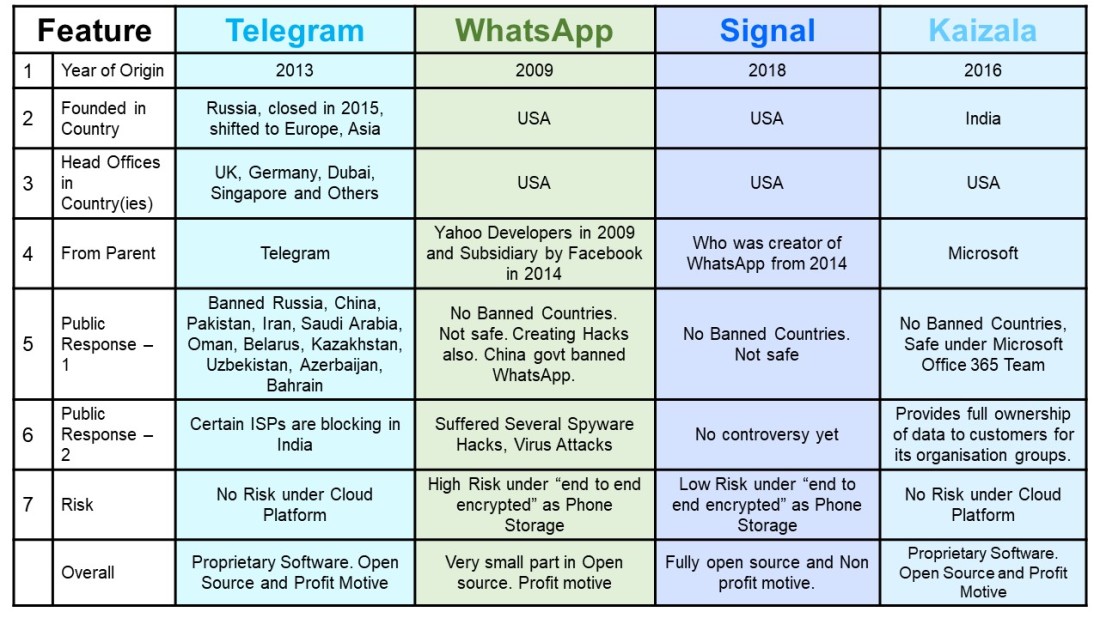
NOTE: Microsoft Kaizala has retired on 31st August 2023. Kaizala moved to Microsoft Teams from 1st September 2023.
Join Us
| Telegram Channel | Twitter | LinkedIn Page | Microsoft Teams | Other Social | WhatsApp Channel | Blogger |
8. Tradition of Hooli
Join us on World Hindu & Health Instruction ( https://t.me/WorldHinduHealth )
The colourful festival of Hooli is celebrated by different names in this vast and culturally diverse country. The traditions followed for the festival varies a little and at times a lot as one moves from one state to other studying the various facets of the festival and getting behind the various colours of it.
Nowhere it is celebrated with so much charm and enthusiasm as in Mathura, Vrindavan, Barsana and Nandgaon – the places associated with the birth and childhood of Lord Krishna. At Barsana Hooli assumes the name of Lathmaar Hooli. Here, women of Barsana give a tough time to men of Nandgaon as they come to play Hooli with them. Women drag the unlucky captives, beat them, dress them in a female attire – yet all is in the spirit of Hooli.
Women of Haryana, specifically the bhabhis too get an upper hand on the day as they get a social sanction to beat their devars and take a sweet revenge for all the mischiefs they have played on them. This revengeful tradition is called the Dulandi Hooli.
The most enjoyable tradition of Hooli, of course, apart from the play of colours is the tradition of breaking the pot. It is celebrated with much fan fair in the states of Maharashtra and Gujarat. Here a pot of buttermilk is hung high on the streets. Men form a huge human pyramid and one on the top breaks the pot with his head. All this while women keep singing Hooli folk songs and throwing buckets and buckets of water. The tradition has its roots in the mischievous nature of Lord Krishna who was so fond of butter milk that he used to steal it from every accessible house in the village. To hide the butter from young Krishna, womenfolk used to hang it high. All in vain!
Hooli is celebrated in the most dignified manner in the state of Bengal. At Vishwa Bharti University, founded by Rabindranath Tagore founded the tradition of celebrating Hooli as ‘Basant Utsav’ or ‘Spring Festival’. Students decorate the campus with intricate rangolis and carry out prabhat pheris in the morning. Clad in a traditional attire young boys and girls sing songs composed by Gurudev and present an enchanting view to the onlookers who gather in large number here. In other parts of Bengal, Hooli is celebrated as Dol Yatra where the idols of Radha and Krishna are placed on a decorated palanquin and taken out in a procession.
For Sikhs, Hooli calls for the display of their physical strength and military prowess as they gather at Anandpur Sahib a day after Hooli to celebrate Hola Mohalla. The tradition was started by the tenth and last guru of Sikh religion, Guru Gobind Singh ji and is being religiously carried forward.
In the north east, Manipuris celebrate the festival in a colourful manner for six continuous days. Here, the centuries old Yaosang Festival of Manipur amalgated with Hooli with the introduction of Vaishnavism in the eighteenth century. The highlight of the festival here is a special Manipuri dance, called ‘Thabal Chongba’.
Well, there are many-many more ways in which Hooli is celebrated. Different states, different cities and different villages have come out with their unique and innovative styles of playing Hooli. It may not be possible to describe all of them at one place. What is noteworthy though is the fact that the spirit of Hooli remains the same throughout. It is the festival which generates the spirit of brotherhood and bring people close – and this is what matters most than anything else.
Join us on World Hindu & Health Instruction ( https://t.me/WorldHinduHealth )
What enhances the spirit of Hooli though is the tradition of consuming the intoxicating bhang. It is generally consumed with thandai or as pakoras. People go high on it and enjoy the festival to the hilt. Other Hooli delicacies include gujiya, mathri, malpua, puranpoli, dahi badas, etc. After a frensied play of colours people love to gorge them up.
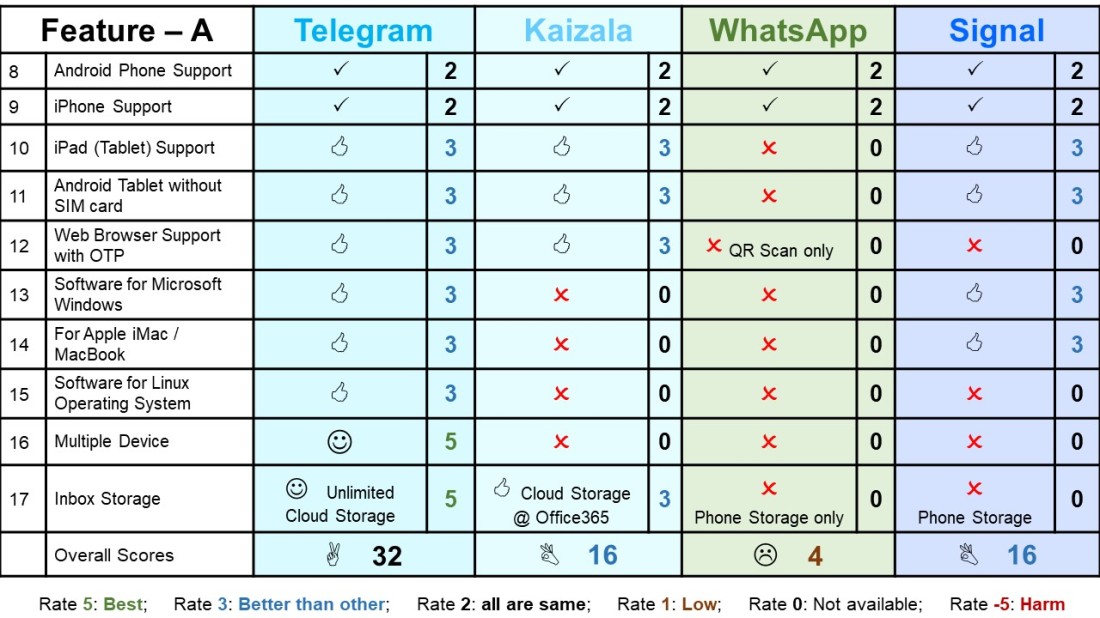
NOTE: Microsoft Kaizala has retired on 31st August 2023. Kaizala moved to Microsoft Teams from 1st September 2023.
Join Us
| Telegram Channel | Twitter | LinkedIn Page | Microsoft Teams | Other Social | WhatsApp Channel | Blogger |
9. Hooli Celebration
Join us on World Hindu & Health Instruction ( https://t.me/WorldHinduHealth )
Hooli celebration takes place with lot of joy and verve throughout the country. The enthusiasm of the people reaches its peak and matches with the nature which is in full bounty at the time of Hooli.
Hooli is being celebrated in Indian since time immemorial but the popularity of Hooli celebrations seems to be rising with every passing year and so is the level of hoo-ha. As no other festival gives so much liberty to the people to let their hair loose and enjoy their hidden crazy self.
Differences of any sort are drowned in the coloured waters of Hooli and people just enjoy being a play animal. To further enhance the festive spirit of Hooli celebrations we have a social sanction to get a kick with the tradition of bhang. Then there is total wildness as people dance to the rhythm of dholak and sing traditional folk songs in loudest possible pitch.
Children particularly enjoy the festival as they throw water filled balloons at passersby…and if anybody stares..they have ready answer, ‘Bura na mano Hooli hai..’ and evoke a smile on the irritated face. Besides, they have their water missiles, called pichkaris to drench the person from far and escape further drenching.
In the midst of these colouring games are savoured the mouth watering hooli specialities like gujiya, malpuas, mathri, puran poli, dahi badas etc and downed with glasses full of thandai.
In some states there is also a tradition of breaking the pot full of buttermilk which is hung high on the streets. A group of boys form a human pyramid and one of them break the pot. All this while womenfolk throw buckets of colour water on them and sing folk songs.
And after a wild and eventful day, evenings are celebrated in a dignified manner by visiting friends and relatives. People exchange sweets and hug each other conveying the warm wishes for Hooli. These days there people also participate and organise Hooli Meets and enjoy the festival till late in the night.
Hooli celebrations that starts with the burning of Holika on the eve of Hooli thus culminates with the lot of funfilled activity and bonhomie. However, at some places specially Mathura and Barsana Hooli celebrations continue for a week as each major temple organise a Hooli bash on different day. Lovers of the festival enjoy every moment to the hilt.
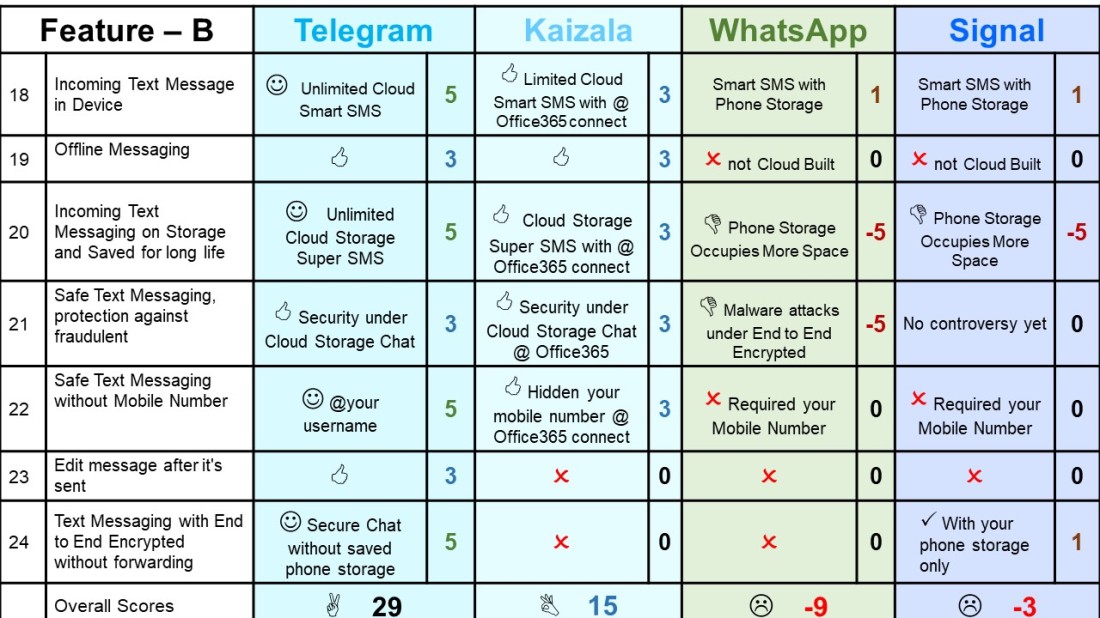
NOTE: Microsoft Kaizala has retired on 31st August 2023. Kaizala moved to Microsoft Teams from 1st September 2023.
Join Us
| Telegram Channel | Twitter | LinkedIn Page | Microsoft Teams | Other Social | WhatsApp Channel | Blogger |
10. The Evening of Bonfires
Join us on World Hindu & Health Instruction ( https://t.me/WorldHinduHealth )
Holika Dahan or the lighting of bonfire takes place on the eve of Hooli. The day is also popularly called ‘Chhoti Hooli’ or the ‘Small Hooli’.The bigger event – play with the colour takes place on the next ‘big’ day.
Holika Dahan is an extremely popular tradition and is celebrated with fervour all across the country and is symbolic of triumph of good over evil. There are numerous legends associated with this ancient tradition and it is difficult to pin-point as to when actually the tradition started.
A Brief History
Holikotsav finds a mention in the Vedas and Puranas. It is stated that during the Vedic period the sacred fire of Hooli was burnt amidst the chanting of specific mantras which were intended for the destruction of the demonic forces. It is also said that on this very day Vaishwadev oblation commenced in which offerings of wheat, gram and oat were made to the sacrificial fire.
Some scholars believe that Holikotsav is named after fried cereals or parched grains called ‘Holka’ in Sanskrit. These parched grains were used to perform hawana (a fire ritual).The vibhuti (sacred ashes) obtained from this ritual was smeared on the forehead of those who participated in the ritual to keep away evil. This vibhuti is called Bhumi Hari. Till date there is a tradition of offering wheat and oat into the Holika fire.
According to Narad Purana, this day is celebrated in the memory of Prahlad’s victory and the defeat of his aunt ‘Holika’. The legend has it that there once existed a mighty demon king by the name of Hiranyakashyap who wished that everybody in his kingdom should worship him. His son, Prahlad became a follower of Lord Naarayana. Hiranyakashyap instructed his sister, Holika to sit in the burning fire with Prahlad in lap. She was blessed with a boon, as a result of which no fire could burn her. But the opposite happened, Prahlad survived and Holika was charred to death. Thus ‘hooli’ is celebrated to commemorate the victory of virtue over evil.
It is because of this event, Holika (a bonfire) is burnt every year on Hooli. The burning of the effigy of Holika is called Holika Dahan.
Another legend mentioned in the ‘Bhavishya Purana’ is also considered to be related to the festival of Hooli. The legend goes back to the kingdom of Raghu, where lived an ogress called Dhundhi who used to trouble children but was finally chased away by them on the day of Hooli. This is said to be the reason why the tradition of Holika Dahan is so popular amongst children and why they are allowed to play pranks on the day.
The Tradition
There is also a specific way in which Holika Dahan takes place. A log of wood is kept in a prominent public place on the Vasanth Panchami day, almost 40 days before the Hooli Festival. People go on throwing twigs, dried leaves, branches of trees left through the winter besides any other combustible material they can spare, on to that log which gradually grows into a sizable heap. On the day of Holika Dahan an effigy of Holika with child Prahlad in her lap is kept on the logs. Usually, Holika’s effigy is made of combustible materials, whereas, Prahlad’s effigy is made of non-combustible one. On the night of Phalguna Purnima, it is set alight amidst the chanting of Rakshoghna Mantras of the Rig Veda (4.4.1-15; 10.87.1-25 and so on) to ward off all evil spirits.
Next morning the ashes from the bonfire are collected as prasadam and smeared on the limbs of the body. If spared by the fire coconuts are also collected and eaten.
Metaphorically though, the fire is meant to signify the destruction of evil – the burning of the ‘Holika’ – a mythological character and the triumph of good as symbolised by Prahlad. However, the heat from the fire also depicts that winter is behind and the hot summer days are ahead.
Next day after Holika Dahan is called Dhuleti, when play with colours actually takes place.
Samvatsar Dahan
It may be noted that in some places like Bihar and UP Holika Dahan is also known as ‘Samvatsar Dahan’. The concept of Samvatsar New Year varies in different provinces of our country. In some provinces the month commences from ‘Krishna Paksha’ while in others it commences from ‘Shukla Paksha’. For Krishna Paksha, the year ends on ‘Purnima’ of the month of Phalgun and thus the new year begins the next day – Chaitra, first day of the Krishna Paksha.
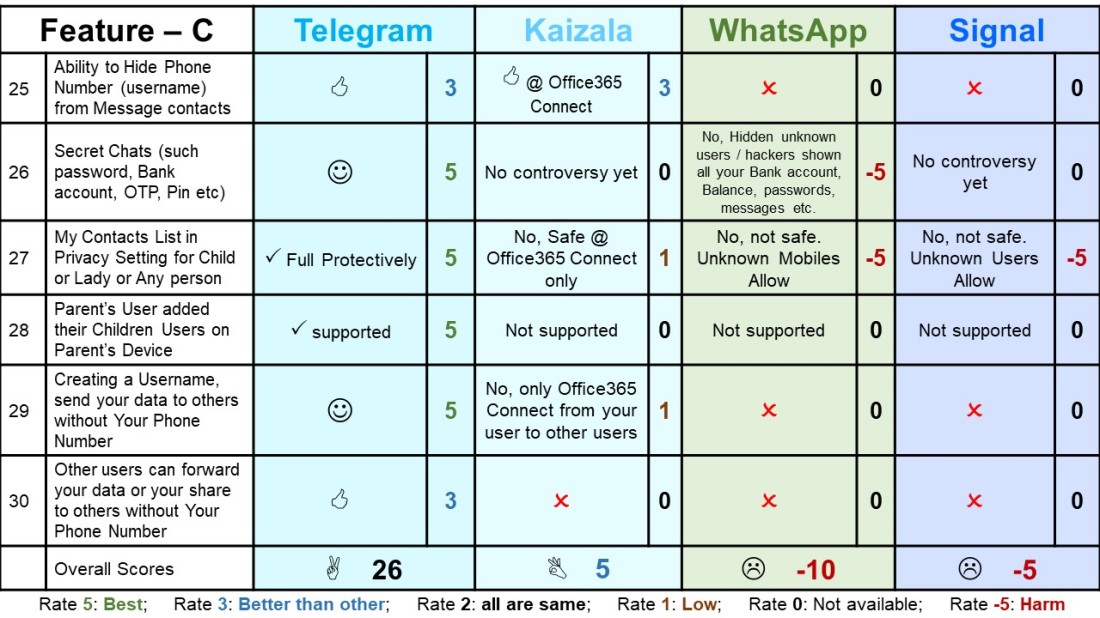
NOTE: Microsoft Kaizala has retired on 31st August 2023. Kaizala moved to Microsoft Teams from 1st September 2023.
Join Us
| Telegram Channel | Twitter | LinkedIn Page | Microsoft Teams | Other Social | WhatsApp Channel | Blogger |
11. Celebrate an Eco Friendly Hooli
Join us on World Hindu & Health Instruction ( https://t.me/WorldHinduHealth )
Ideally, the joyous festival of Hooli is meant to celebrate the arrival of Spring while the colours used in Hooli are to reflect of the various hues of spring season. But unfortunately, in modern times Hooli does not stand for all things beautiful. Like various other festivals, Hooli too has become ruthlessly commercialised, boisterous and yet another source of environmental degradation. To de-pollute Hooli and make it in sync with nature, as it is supposed to be, several social and environmental groups are proposing a return to more natural ways of celebrating Hooli.
The aim of this articles is to generate awareness amongst people about the various harmful effects around Hooli celebrations and encourage people to celebrate an eco friendly Hooli!
Please read on to know about the three main environmental concerns around Hooli –
- The use of toxic chemical colours.
- The use of wood for burning Hooli fires.
- The wasteful use of water during Hooli.
I. Harmful Effects of Chemical Colours
In earlier times when festival celebrations were not so much commercialised Hooli colours were prepared from the flowers of trees that blossomed during spring, such as the Indian Coral Tree (parijat) and the Flame of the Forest (Kesu), both of which have bright red flowers. These and several other blossoms provided the raw material from which the brilliant shades of Hooli colours were made. Most of these trees also had medicinal properties and Hooli colours prepared from them were actually beneficial to the skin.
Over the years, with the disappearance of trees in urban areas and greater stress for higher profits these natural colours came to be replaced by industrial dyes manufactured through chemical processes.
Around 2001, two environmental groups called Toxics Link and Vatavaran, based in Delhi, did a study on all the three available categories of colours available in the market – pastes, dry colours and water colours. The study revealed that all of these three forms of chemical Hooli colours are hazardous.
Harmful Chemicals in Hooli Paste type colours
According to their researched fact sheet on Hooli, the pastes contain very toxic chemicals that can have severe health effects. Please check the table below to know about the chemical used in various Hooli colours and their harmful effects on human body.
| Colour | Chemical | Health Effects |
| Black | Lead oxide | Renal Failure |
| Green | Copper Sulphate | Eye Allergy, Puffiness and temporary blindness |
| Silver | Aluminium Bromide | Carcinogenic |
| Blue | Prussian Blue | Contract Dermatitis |
| Red | Mercury Sulphite | Highly toxic can cause skin cancer |
(Source: Vatavaran)
Harmful Chemicals in Gulal
The dry colours, commonly known as gulals, have two components – a colourant that is toxic and a base which could be either asbestos or silica, both of which cause health problems. Heavy metals contained in the colourants can cause asthma, skin diseases and adversely affect the eyes.
Harms of Wet Hooli Colours
Wet colours, mostly use Gentian violet as a colour concentrate which can cause skin dis-colouration and dermatitis.
These days, Hooli colours are sold loosely, on the roads, by small traders who often do not know the source. Sometimes, the colours come in boxes that specifically say ‘For industrial use only’.
Click to read more on Hooli Chemical colours
Action Taken by Environmental Groups
Following the publication of these studies several environmental groups took up the cause to encourage people to return to a more natural way of celebrating Hooli. Amongst these,
- Navdanya, Delhi published a book called Abir Gulal, which spoke of the biodiversity that was the source of natural colours.
- Development Alternatives, Delhi and Kalpavriksh, Pune have developed educational tools to teach children simple ways of making their own natural Hooli colours.
- The CLEAN India campaign has been teaching children how to make beautiful natural colours.
Make your own Hooli colours
Hooli festival lovers will be thrilled to know that it is possible to make simple natural colours in one’s own kitchen. Here are some very simple recipes to make natural colours:
| Colour | Method of Preparation |
| Yellow | 1) Mix turmeric (haldi) powder with chick pea flour (besan) 2) Boil Marigold or Tesu flowers in water |
| Yellow liquid colour | Soak peels of pomegranate (Anar) overnight. |
| Deep Pink | Slice a beetroot and soak in water |
| Orange – red paste | Henna leaves (mehndi) can be dried, powdered and mixed with water. |
For more information please read How to make Natural colours?
Purchase Natural Hooli Colours
For those who do not have the time to make their own colours, there is the choice of buying natural Hooli colours. Several groups are now producing and promoting such colours, although it is important to verify the ingredients of the colours and ensure you know enough about the source.
II. The Hooli Bonfire
The burning of fuel wood to create the bonfire for Holika Dahan presents another serious environmental problem. According to a news article, studies done in the state of Gujarat reveal that each bonfire uses around 100 kg of wood, and considering that approximately 30,000 bonfires are lit in the state of Gujarat just for one season, this leads to a wastage of a staggering amount of wood.
Groups such as Sadvichar Parivar are now advocating one symbolic community fire, rather than several smaller bonfires across the city as a way to reduce wood consumption. Others are also suggesting that these fires be lit using waste material rather than wood.
III. A Dry Hooli?
In the current situation, when most cities in India are facing acute water scarcity, the wasteful use of water during Hooli, is also being questioned. It is common for people to douse each other with buckets of water during Hooli, and children often resort to throwing water balloons at each other. The idea of a dry Hooli seems alien at first, especially as the climate becomes warmer around Hooli, and the water provides welcome relief from the heat. However, considering that in some urban areas, citizens can go without water for several days, it seems wasteful to use so much water simply for a celebration.
Environmental Consciousness Amongst People
It is a relief to notice that the awareness about the environmental impacts of celebrating Hooli are being brought to light by various NGOs. And gradually, more and more Indians are choosing to turn to a more natural and less wasteful way of playing Hooli.
Hooli Festival expresses its gratitude to Ms Manisha Gutman, Coordinator, Safe festivals campaign, Kalpavriksh Environment Action Group – Pune for contributing this article.
Join us on World Hindu & Health Instruction ( https://t.me/WorldHinduHealth )
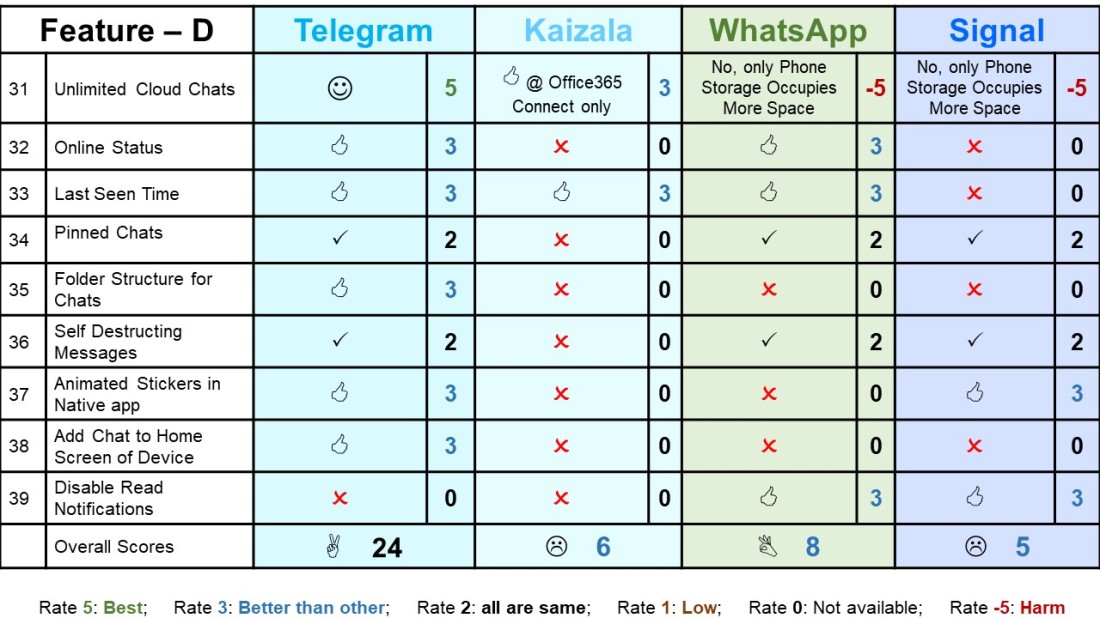
NOTE: Microsoft Kaizala has retired on 31st August 2023. Kaizala moved to Microsoft Teams from 1st September 2023.
Join Us
| Telegram Channel | Twitter | LinkedIn Page | Microsoft Teams | Other Social | WhatsApp Channel | Blogger |
12. Recipes
Amazing Hooli Festival 6 ways – https://youtu.be/2ff2i2hmdvg
- Thandai
- Chashni Wali Gujiya
- Instant Malpua
- Samosa
- Matka Kulfi
- Katori Chaat
Video Recipe # 1
Tradition of Thandai
World Wide Vegetarian Recipes – Index
Thandai is embedded with the tradition of Hooli. A refreshing and healthful drink thandai is savoured in the midst of the play of colours when people become a little exhausted throwing each other in the pool of coloured waters. A glass of Thandai offers instant energy and sets the mood for playing with colour. Besides, when laced with the intoxicating bhang it can make one sing, dance and go wild. Infact, bhang thandai is used as a mood setter for the festival of Hooli.
Hub of Thandai
The tradition of thandai is particularly prevalent in North India. Banaras (now Varanasi) is called the hub for thandai. This is so as Banarasis are said to have a passion for milk-based drinks and of all the drinks thandai is said to be their specialty.
Making of Thandai
Thandai is a cooling drink usually made of purified water, sugar, seeds of watermelon and muskmelon, almonds, lotus stem seeds, cashew nut, cardamom, saunf, rose-flower, white pepper, saffron and the very intoxicating bhang.
After Effects
A spoon of bhang in the thandai makes a world of a difference. Bhang is mixed with milk, ice and cream and added to the thandai to produce a kick. While some become deliriously happy others turn as depressed as hell. Caution is needed when taking a bhang thandai as overdose might not be prove to be good.
Drinking thandai in Hooli also gels with the weather as in North temperature runs high at that time and thandai is a coolant. Although home-made thandais always tastes better, in Banaras and elsewhere in India, it is now possible to buy commercial concentrates and make instant thandais.
Video Recipe # 2
Hooli Thandai 2 ways
(Full Screen on the video)
.
Video Recipe # 3
Easy Thandai for Hooli Festival
(Full Screen on the video)
.
Video Recipe # 4
Kanji for Hooli Festival
(Full Screen on the video)
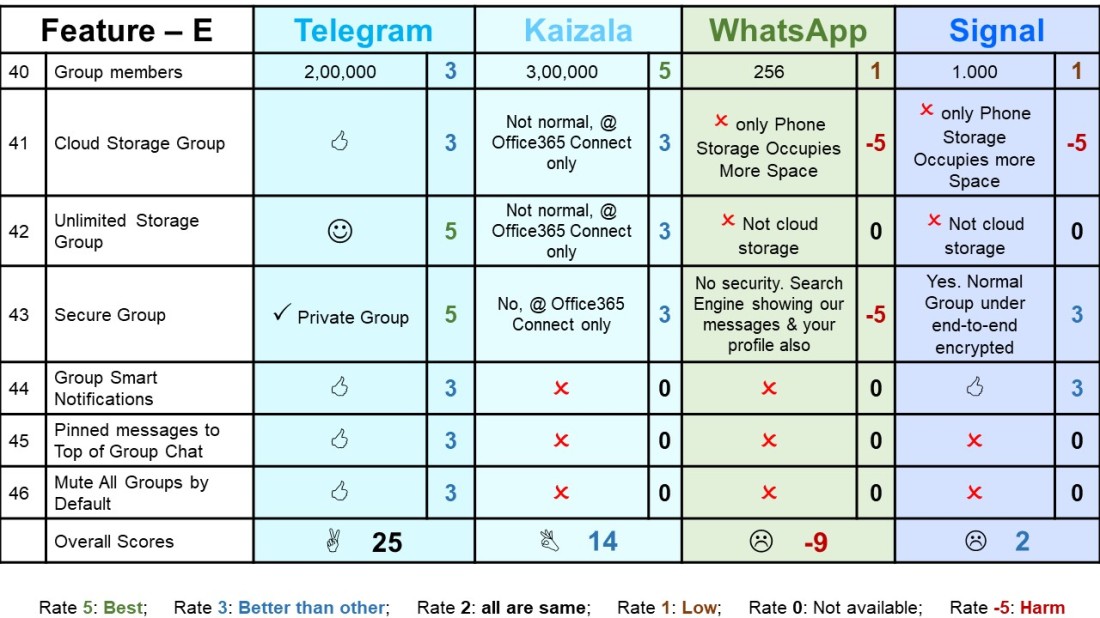
NOTE: Microsoft Kaizala has retired on 31st August 2023. Kaizala moved to Microsoft Teams from 1st September 2023.
Join Us
| Telegram Channel | Twitter | LinkedIn Page | Microsoft Teams | Other Social | WhatsApp Channel | Blogger |
13. Tradition of Bhang
World Wide Vegetarian Recipes – Index
Associated with Lord Shiva, bhang has now become synonymous with hooli. To the extent that bhang drinks have now become an official Hooli drink.
Culled from the leaves and buds of cannabis – the very intoxicating bhang helps to escalate the spirit of hooli – a festival which does not recognise any restrictions. Lip smacking thandai, pakoras and vadas, all having bhang as a very essential ingredient, are savoured by all on the day.
Bhang Preparations in Banaras
The tradition of consuming bhang on hooli is particularly rampant in North India where hooli itself is celebrated with a gusto unseen anywhere else.
But, the hub of bhang is Varanasi or Banaras, the land of Shiva worship, where bhang is prepared on its famous ghats.
Anywhere on the ghats one can find large number of men engaged in the process of preparing bhang. Using mortar and a pestle, the buds and leaves of Cannabis are squashed and ground into a green paste. To this mixture milk, ghee, and spices are added. The bhang base is now ready to be made into a nutritious, refreshing drink – Thandai, a healthy alternative to alcohol. Bhang is also mixed with ghee and sugar to make a tasty green halva, and into peppery, chewy little balls called ‘golees’.
Video Recipe # 5
Dal Kachori for Hooli Festival
(Full Screen on the video)
.
Video Recipe # 6
Rang Chandrakala for Hooli Festival
(Full Screen on the video)
.
Video Recipe # 7
Thandai Balls or Colourful Laddu for Hooli Festival
(Full Screen on the video)
Video Recipe # 8
Hooli Special Recipes
Hooli Special Recipes from World Wide Vegetarian Recipes on Vimeo.
.
Telegram Channel: Join at World Wide Vegetarian Recipes (@WorldVegetarianRecipes)
A Brief History of Bhang
Bhang was first used as an intoxicant in India around 1000 BC and soon became an integral part of Hindu culture. In the ancient text Artharvaveda, Bhang is described as a beneficial herb that “releases anxiety”. Bhang preparations were sacred to Gods, particularly Shiva. One of Shiva’s epithets was “Lord of Bhang” as he is said to have discovered the transcendental properties of the mixture.
In imitation of Shiva, many sadhus use Bhang to boost meditation and achieve transcendental states. Besides, Bhang or cannabis is also believed to be popular amongst Sufis as an aid to spiritual ecstasy since a long time.
Bond with the Bhang
Ancient as it is, bhang has become a inseparable part of Indian tradition. So much so that it has become symbolic for a lot of things. They might be, or rather they are, pure superstitious believes. But if one understands the inherent sentimental and emotional nature of Indians, one can very easily feel the emotional bond people have with bhang.
Associated with Lord Shiva, hemp plant is regarded holy by the Hindus. There is even a belief that to meet someone carrying bhang is an omen of success. And, if longing for hemp plant foretells happiness, to see it in dreams ensures prosperity for a person in future. Also, walking underfoot a holy bhang leaf spells doom for a person.
People also strongly believe in the medicinal properties of the hemp plant. If taken in proper quantity bhang cures fever, dysentery and sunstroke. It helps to clear phlegm, quicken digestion, sharpen appetite, cure speak imperfection and lispering. Besides, it freshens the intellect and gives alertness to the body and gaiety to the mind.
What is bhang?
Cannabis Rank: Genus
Genus of three closely related species, often hybridised.
Cannabis is dioecious, i.e. individual plants are either male or female. The female plant is the more potent, especially when unpollinated (hence sinsemilla = without seed).
The plant has an ancient relationship with humankind, and has long been cultivated as a source of medicine (the buds), fiber (the stalks), and food (the seeds). It has been found in neolithic Chinese archaeological sites, and is mentioned in the earliest Chinese pharmacopoeias. In India it is associated with Shiva and has played an important role in religious life as a sacred inebriant.
Botanical Suffix: Linnaeus
Habitat: Native to Central Asia, now found worldwide.
Isolated Chemicals: THC Concentration varies greatly by strain.
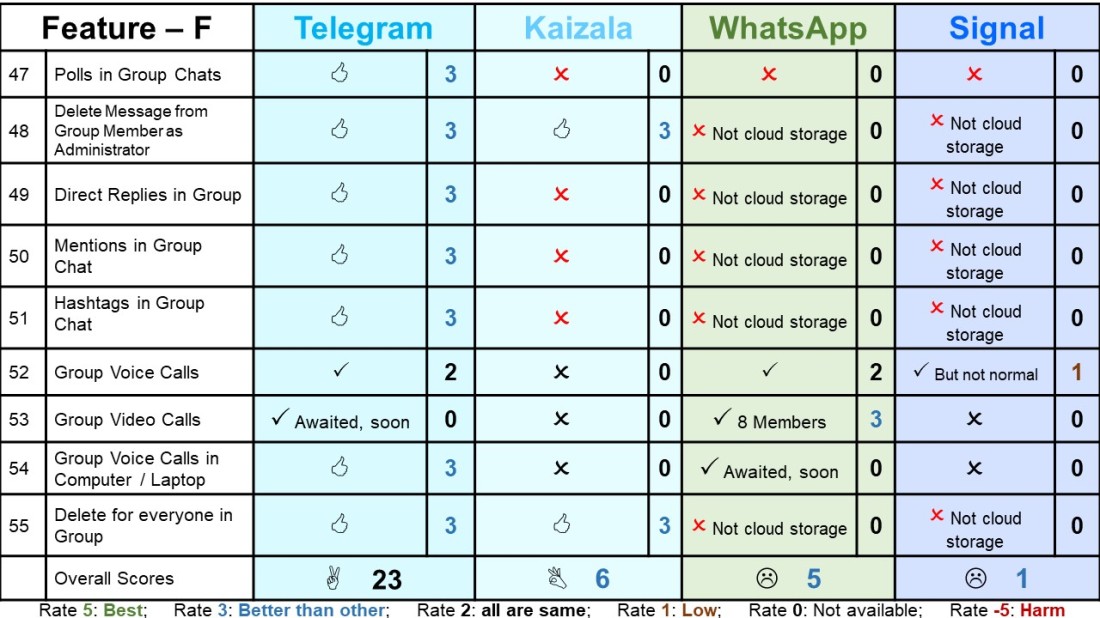
NOTE: Microsoft Kaizala has retired on 31st August 2023. Kaizala moved to Microsoft Teams from 1st September 2023.
Join Us
| Telegram Channel | Twitter | LinkedIn Page | Microsoft Teams | Other Social | WhatsApp Channel | Blogger |
14. Hooli Mela
Hooli Mela infuse vibrancy and enthusiasm amongst people in India and abroad. Large number of tourists are attracted towards these grand affair of Hooli celebration. Hooli fairs are more popular in villages than they are in cities. People from far off villages specially move down to the village holding the Hooli Fair a week before the festival. Hooli Mela serves as a full entertainment package for young children and elders. One can visualise the craze and love to celebrate the colourful festival with these Hooli fairs.
Excitement for Hooli Mela
Excitement for Hooli Mela is palpable amongst the visitors. Their broad smile, garish clothes and enthusiasm says it all. Hooli Mela hold much importance for people who live far from their families. Hooli Mela showcase the best of Indian culture and Hooli celebrations, that’s why most of the people living far off take out time to be attend Hooli fair.
Grand Hooli Melas are usually organised in villages which has a special cultural and traditional touch to it. People from India and other countries come to celebrate the colourful festival of Hooli by visiting special Hooli Melas.
But apart from serving as the source of entertainment Hooli Mela play a significant role of bringing people together. During these fairs people come closer and renew relationships. Hooli fairs help children to understand their religion and the festival in the most joyous manner. In several Hooli Fairs, competitions for children are also organised to attract the kids and bring out their latent talent.
Hooli Mela – Splash of Colours and Fun
Hooli Mela is becoming an ideal option for people who want to spend Hooli in a different and more colourful way. People enthusiastically visit these fairs to enjoy the Hooli Festival. Colour is the main theme of the Hooli fair. Every where one can see fragrant colours either kept in thalis or gunny bags. Even shopkeepers are seen with painted faces and hands to create the perfect aura of Hooli Festival. People also smear each others’ faces with a little bit of gulal and abeer.
Different stalls lined up at the fair are also based on some or the other Hooli theme. A separate section for Hooli dance and songs is created where artists from various places come and entertain people. Magic and puppet shows based on various themes drew maximum attention of the visitors especially kids. Large food sections including variety of special Hooli sweets and other dishes is too difficult for the visitors to resist. People love to taste the traditional Hooli sweets like gujiya and malpuas. Besides, stalls of traditional clothes, Hooli toys for kids and jewelry, there are special shops selling beautiful earthen pots indicating the advent of summer. Shops like those of handcrafted items attract a large number of foreign visitors. Main attraction of the Hooli Mela are the traditional drinks of Bhaang and Thandai. People present in the Hooli fair love to taste the traditional drink and enjoy the excitement of Hooli.
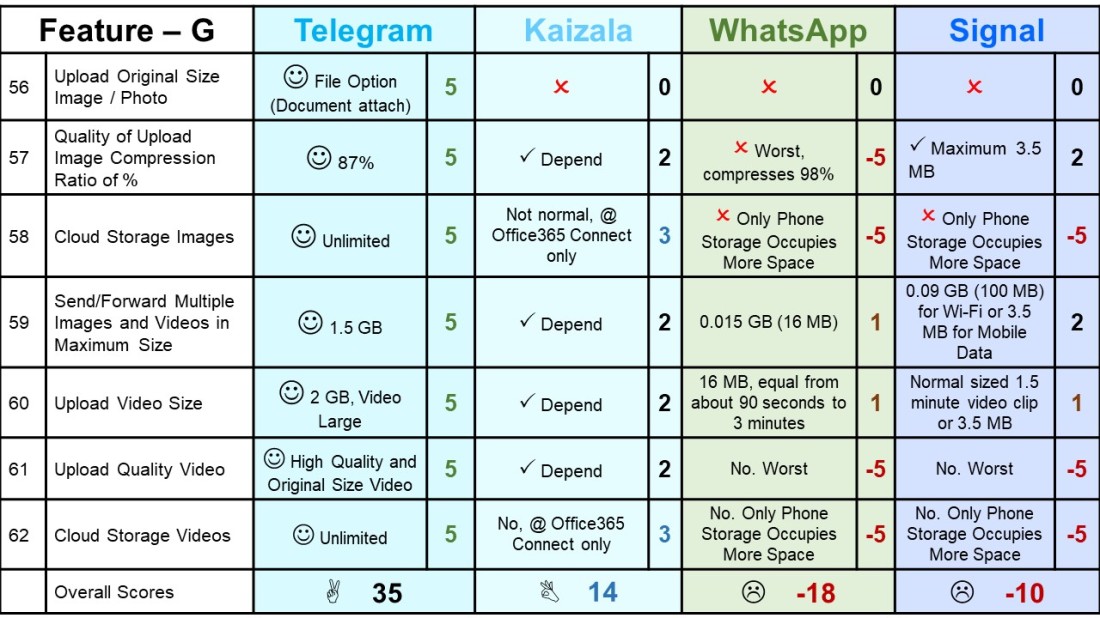
NOTE: Microsoft Kaizala has retired on 31st August 2023. Kaizala moved to Microsoft Teams from 1st September 2023.
Join Us
| Telegram Channel | Twitter | LinkedIn Page | Microsoft Teams | Other Social | WhatsApp Channel | Blogger |
15. Bhajan on Hooli
An excellent collection of popular
Join us on World Hindu & Health Instruction ( https://t.me/WorldHinduHealth )
Hooli Bhajans are available on this page that are enough to complete the festive feeling of Hooli. Pass these bhajans to all hooli lovers and make the festival more colourful and nostalgic. Send this wonderful collection of Hooli Bhajans to your friend and family to add to the celebration.
Nandi kese khele anokhi hooli sham ke
Hooli khelan aayo sham
Ya ne esso chatak
Raseya ko nari banayo re
Hari khelan faag
Mohe chhedo na
Hooli Bhajans
Nandi kese khele anokhi hooli sham ke
Nandi kese khele anokhi hooli sham ke
Ya hari me kho gayi re mere payal pav ke
Avhi nayi gadahi mene bahutak dam ke
Nandi kese khele ………………
Dhum sahi na jaye sakhi re aado sham ke
Harmat laag jaye esse hooli kaya kaam ke
Nandi kese khele ………………
Rese bahut hai buri sakhi re, gokul gavo ke
Rag dale chap lagaye, apne naam ke
Nandi kese khele ………………
Yah hari hai ajar amar, govardan dham ke
Mitre mandle khush rahi, sab har naye saal ke
Nandi kese khele ………………
Hooli khelan aayo sham
Hooli khelan aayo sham aaj is rag me bhori re
Kore kore kalash mage, va me keshar ghore re
Rag berage karo aaj kare te goro re
Hooli khelan aayo sham …………..
Pas padose bulaye yahi, aagan me ghoro re
Pitambar levo chin aaye, pahirav dev chori re
Hooli khelan aayo sham …………..
Hare bais ke basureya yaki tode marode re
Tare de de ya nachavo, apne aaro re
Hooli khelan aayo sham ……………
Chand sakhi ke yahi vinte, kare nihore re
Haha khaye pare jab peya, tab yeh chodo re
Hooli khelan aayo sham ……………
Ya ne esso chatak
Mere chunri me lag gaye daag re, ya ne esso chatak rag daalo
Aoran to hooli naye khelo, ya ki mohe se lag gayi laag re
Ya ne esso chatak ……………..
Mohu to ketni varaj sundri, ye to mohe se khele faag re
Mere chunriya esse kori, par raseya ne esse bhore
Ab kese chutego ya ko daag re, ya ne esso chatak ……………..
Raseya ko nari banayo re
Raseya ko nari banayo re, raseya ko nari banayo re
Gaal gulal dugan me anjan, vedeh bhal lagayo re
Kati lehga gal mahi kanchuki, chunri shish aothavo re
Narayan kartari bajaye ke, pashu mati nekat nachavo re
Raseya ko nari banayo re …………………………….
Hari khelan faag
Hari khelan faag, machi hooli
Madh utre ritu fagun aayo, ghar ghar sham karat feri
Fhek gulal haat pichkari, kesar pit surag wali
Bharma khele mahadev khele, surpati khele var jori
Surdas chavi dekh magan bhaye, hari ke charan lage dori
Hari khelan faag ……………….
Mohe chhedo na
Mohe chhedo na, O mohe chhedo na nand ke lala
Ki main hi brij bala, Nahi main radha teri
Kahe pakad li meri kalai, Teri duhai o krishna kanahi
Kahe pakad li meri kalai, Teri duhai krishna kanahi
Harzai too bansi wala, Ki main hoon brij bala
Nahi main radha teri, Mohe chhedo na nand ke lala……….
Radha se hogi teri chhichholi, Aankh micholi tum humjoli
Hooli main yoon mujhe kyon rang dala, Ki main hoon brij bala
Nahi main radha teri, Mohe chhedo na nand ke lala………
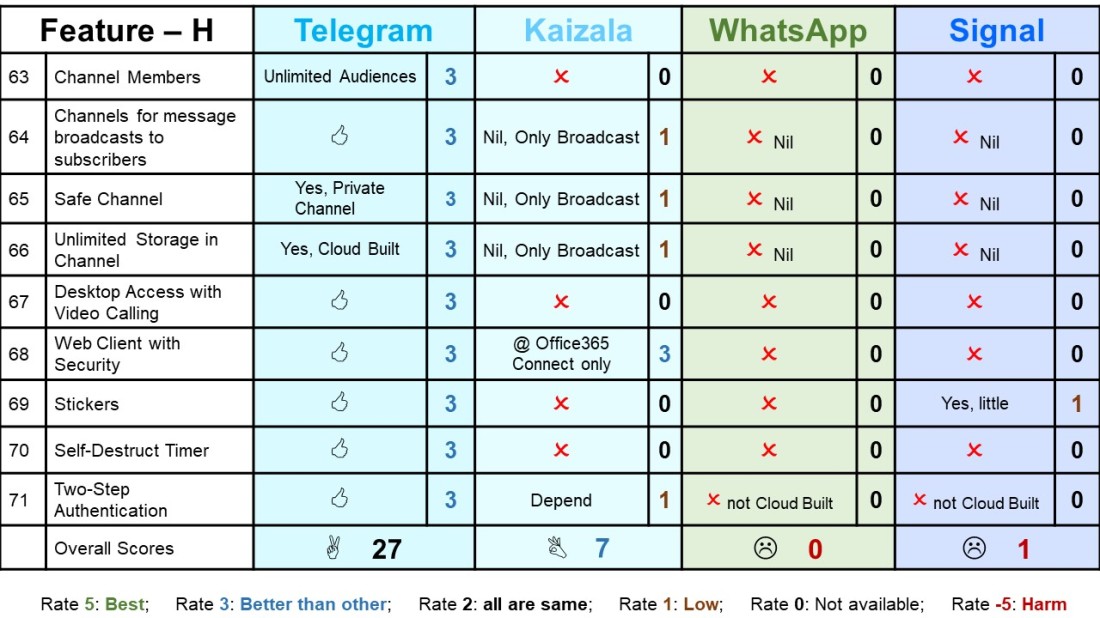
NOTE: Microsoft Kaizala has retired on 31st August 2023. Kaizala moved to Microsoft Teams from 1st September 2023.
Join Us
| Telegram Channel | Twitter | LinkedIn Page | Microsoft Teams | Other Social | WhatsApp Channel | Blogger |
16. Hooli Safety Tips
Join us on World Hindu & Health Instruction ( https://t.me/WorldHinduHealth )
Here are a few tips and suggestion to make your hooli safe and joyous.
- Play safe. Don’t get to boisterous and do not let others to be rude on you.
- The best option would be to play with natural home made colours. Your skin and hair will feel tampered with the use of skin friendly natural products.
- If natural colours are not possible, then ensure a better quality of colours. Buy colours from a reputed shop or vendor.
- Use more of red or pink colours which looks good and can easily taken off. Gaudy purple, green, yellow, orange have more harmful chemicals in them and should be avoided.
- Make sure that your face is well creamed before and after the play.
- Apply thick coating of paint on your nails- both in fingers and toes so that they remain protected.
- Oil your hair well, so that colour doesn’t stick on your hair and can be washed off easily later.
- Cover your hair. Make use of hat or caps to protect your hair from being coloured with hard-to-rinse dyes.
- Make sure that powder or any other product does not get inside your eyes. Eyes are extremely vulnerable on Hooli because of their strategic place in body and also because of the use of harmful chemicals in colours these days. Please ensure that your eyes remain protected at all times. Use a sunglass to protect your eyes from a misfire of colour filled darts or water jets.
- Use dental caps to save your teeth from any unwanted stains.
- Put on your worst clothes so that you won’t have to take on the hassles of an immediate washing.
- Rags like tattered denims and bright shades like black, blue, green, purple are highly recommended.
- Try to save yourself off from all possible attacks on the face. In case your such attempts fail, keep your eyes and lips tightly shut if you are attacked on your face.
- If possible avoid going outside your home, atleast for the peak hours of celebration. The premises of your home ensure that you are safe from pouncing hooligans, even friends who can be a little rough on the day.
- When traveling keep the car windows thoroughly shut, even if you don’t have an AC car. Do not bump into the frensied group of mob if you take to streets. Better you cross the road to the sidewalk across. Or, simply stay at a safe distance.
- Do not use permanent dyes. If someone has applied it on you, do not rub the face with soap immediately in order to get rid off it, especially when it is wet. Instead, use good quality cleansing milk for removal. It’s better than using soap, which will dry up your skin.
- Rotten eggs when thrown on your head, flying missiles from locality buildings…are still not too bad, will be smelly yet is a good conditioner for your hair. But tar, shit, Mobil, stones and all the rubbish that you can be hit with is not. Avoid being a prey to hooligans.
- Remember you also have police on your side and if any untoward revelers misbehave, you can make your complaint. Mark out the locality, building and if possible the person.
- Take a bath much later after the entire Hooli celebration is over. Taking frequent baths, washing the face again and again, will ruin your skin. You will also lose hair, for too much soap/shampoo has a drying effect.
- If you are prone to skin allergies, avoid playing with gulal altogether. Going to a dermatologist (skin specialist) serves no purpose, after the damage is done.
- Avoid running on jumping on wet floors, so that you don’t slip and injure yourself. Bones are specially vulnerable on this day.
- Avoid over indulgence in bhang, drinks or food… so that you don’t repent later.
- Do not drive if you are high on alcohol or bhang.
- Keep handy pain killers, anti-oxidants, anti-allergic tablets if all the above tips have been disregarded.
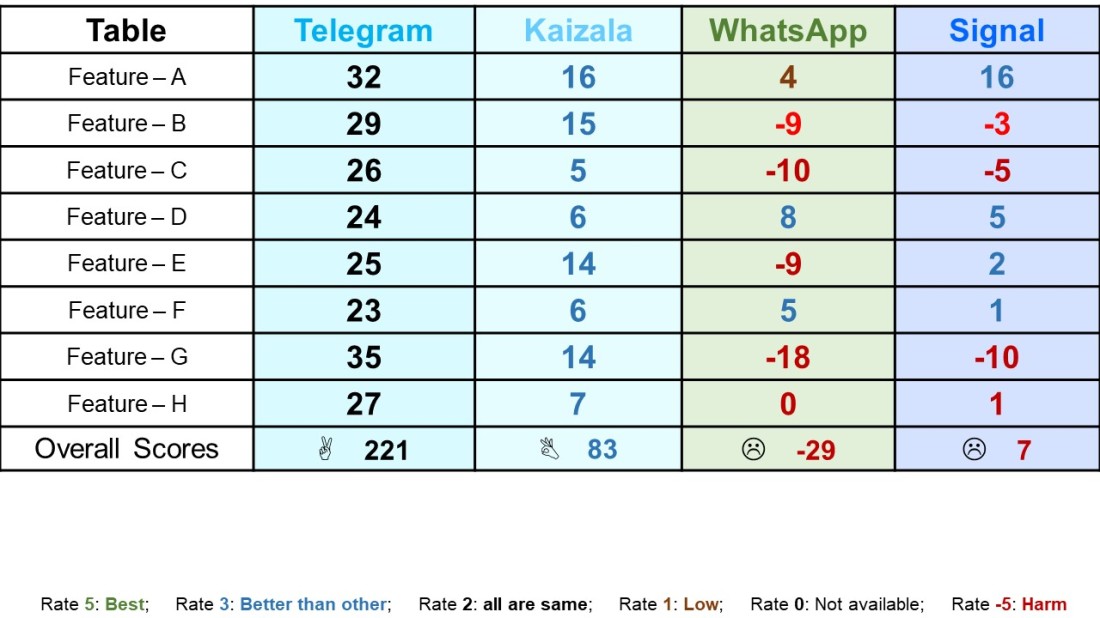
NOTE: Microsoft Kaizala has retired on 31st August 2023. Kaizala moved to Microsoft Teams from 1st September 2023.
Join Us
| Telegram Channel | Twitter | LinkedIn Page | Microsoft Teams | Other Social | WhatsApp Channel | Blogger |
17. Regional Names of Hooli
Popularity of Hooli can be gauged from the number of names Hooli has in different states. Also of great interest is the story behind each of these names.
As one moves across from one state to another, one can surely discover the myriad shades of human emotions behind the story that goes with each of these names of hooli.
These stories will make you feel proud of the rich cultural diversity of India. Besides, what is to be appreciated is the underlying strong bond of unity that binds this uniquely culturally diverse country.
Even the Gods that are worshiped on Hooli differ in different corners of the country. The way the festival is celebrated also differs but the spirit is same – the one of love and brotherhood. Inspite of their uniqueness in different states, the festival is considered to be the one which enhances the secular fabric of India.
Let us now unravel the traditions of Hooli by learning the story behind the different names of Hooli:
- Lathmaar Hooli
- Dulandi Hooli
- Rangpanchami
- Basant Utsav
- Dol Purnima
- Hola Mohalla
- Shimgo
- Kaman Pandigai
- Phagu Purnima
Lathmaar Hooli
In what is known as the hub of hooli in India – Barsana, Hooli is known as Lathmaar Hooli. Sounds violence?? There is more violece than the name signals off. The stick is in the hands of the women on this day and the men need to work a lot to save themselves from the immensely charged up womenfolk.
The birth place of Lord Krishna’s beloved Radha, Barsana celebrates Hooli with extreme enthusiasm as Krishna was famous for playing pranks on Radha and gopis. In fact, it was Krishna who started the tradition of colours by first applying colour on Radha’s face.
Womenfolk, of Barsana it seems, after thousands of centuries want to take a sweet revenge of that prank of Krishna. Even men have not left their mischief and are still eager to apply colour on the women of Barsana.
Following the tradition, men of Nandgaon, the birthplace of Krishna, come to play Hooli with the girls of Barsana, but instead of colours they are greeted with sticks.
Completely aware of what welcome awaits them in Barsana, men come fully padded and try their best to escape from the spirited women. Men are not supposed to retaliate on the day. The unlucky ones are forcefully led away and get a good thrashing from the women. Further, they are made to wear a female attire and dance in public. All in the spirit of Hooli.
The next day, it is the turn of men of Barsana. They reciprocate by invading Nandgaon and drench the womenfolk of Nandgaon in colours of kesudo, naturally occurring orange-red dye and palash. This day, women of Nadagow beat the invaders from Barsana. It is a colourful site.
Dulandi Hooli
Hooli recieves this name in the state of Haryana. Here, bhabhi – the brothers wife gets an upper hand on the day of hooli. And, devar’s – husband’s younger brothers need to watchout.
The bhabhi’s on this day get a social sanction on Hooli to beat their devars and make them pay the price of all the pranks they played on them for the entire year. Bhabhi’s roll up their saris in the form of a rope in a mock rage, and give a good run to their devars.
In the evening, devars are supposed to bring sweets for their dear bhabhi.
Besides, there is also a tradition of breaking the pot of buttermilk hung high in the street by forming a human pyramid.
Rangpanchami
People of Maharashtra commonly know this festival of colours by the name of Rangpanchami as the play of colours is reserved for the fifth day here. Locals of Maharashtra also know Hooli as Shimga or Shimgo.
The festival is particularly popular amongst fisher folk. They celebrate it in on a large scale and revel in the festivities by singing, dancing and merry-making. This special dance provide them means to release all their repressed feelings, needs and desires. People also utter sound through their mouths in a peculiar fashion by striking their mouths with the back of their hands.
Basant Utsav
Hooli by the name of Basant Utsav is celebrated with fervour in the state of West Bengal. The tradition of Vasantotsav, meaning Spring Festival was started by poet and Nobel laureate Rabindranath Tagore at Shantiniketan, the University he founded.
What is appreciated is the grace and diginified manner in which Vasant Utsav is celebrated in West Bengal as compared to boisterous Hooli witnessed in most parts of India. Boys and girls joyfully welcome Spring, the season of hope not just with colours but with songs, dance, chanting of hymns in the serene ambiance of Shantiniketan. Anybody who got a chance to witness this elegant way of celebrating Hooli in Bengal remembers it with fond memory for the rest of his life.
Dol Purnima
Hooli is also known by the name of Dol Purnima in West Bengal.
Early in the morning, on the Dol Purnima day students dress up in saffron-coloured clothes and wear garlands of fragrant flowers. They sing and dance to the accompaniment of musical instruments presenting an enchanting view to the onlookers and a memory to cherish for years.
The festival is also known as ‘Dol Jatra’, ‘Dol Purnima’ or the ‘Swing Festival’. The festival is celebrated in a dignified manner by placing the idols of Krishna and Radha on a picturesquely decorated palanquin which is then taken round the main streets of the city. The devotees take turns to swing them while women dance around the swing and sing devotional songs. Throughout the procession men keep spraying coloured water and colour powder, ‘abeer’ at them.
Hola Mohalla
Hooli gets this joyful name in the state of Punjab. The festival is celebrated in an entirely different manner, it’s meaning and significance also shifts a little here.
Hola Mohalla is actually an annual fair that is organised in a large scale at Anandpur Sahib in Punjab on the day following the festival of Hooli. Practise of holding a fair of this kind was initiated by Guru Gobind Singh, the tenth Sikh guru. Purpose of the fair was to physically strengthen the Sikh community by holding military exercises and mock battles.
The festival is celebrated for three consecutive days, in which members of Sikh community display their physical strength by performing dare-devil acts like bareback horse-riding, standing erect on two speeding horses, Gatka (mock encounters), tent pegging etc. This is followed by music and poetry competition to lighten the charged up atmosphere.
A number of durbars are also held where Sri Guru Granth Sahib is present and kirtan and religious lectures take place. This helps strengthening the soul of community. On the last day a long procession, led by Panj Pyaras, starts from Takth Keshgarh Sahib, one of the five Sikh religious seats, and passes through various important gurdwaras like Qila Anandgarh, Lohgarh Sahib, Mata Jitoji and terminates at the Takth.
For people visiting Anandpur Sahib, langars (voluntary community kitchens) are organised by the local people as a part of sewa (community service). Raw materials like wheat flour, rice, vegetables, milk and sugar is provided by the villagers living nearby. Women volunteer to cook and others take part in cleaning the utensils. Traditional cuisine is served to the pilgrims who eat while sitting in rows on the ground.
Shimgo
The funfilled and enthusiastic people of Goa know Hooli by the name of Shimgo in their local dialect Konkani. Here too, people play with bright colours to welcome the arrival of spring. This is followed by rich, spicy chicken or mutton curry called shagoti and sweet preparations. Some people also know Hooli by the name of Rangpanchami.
The most interesting facet of Hooli or Shimgmotav in Goa is the huge procession which is carried out in Panjim. Highpoint of this is performances of troupes and cultural drama depicting mythological and religious stories. People from every cast and religion participate in this festival with great enthusiasm.
Kaman Pandigai
In the state of Tamil Nadu, people worship Kaamadeva for his supreme sacrifice on the occasion of Hooli. People know Hooli by three different names Kaman Pandigai, Kamavilas and Kama-Dahanam.
The Legend
People of Tamil Nadu have great faith in the legend of Shiva and Kaamadeva. The story goes that Shiva went into deep meditation after the death of his consort, Sati. Due to Shiva’s indifferent attitude gods became tensed and worried. Also, daughter of the mountains, Parvati started mediating to get Shiva as her husband.
To get Shiva back to his original self gods seeked the help of Kaamadeva- the god of love. Fully aware of the repurcussions of such an act, Kaamdeva agreed to help gods for the good of the world. He shot his powerful arrow on Shiva when he was in deep meditation. Enraged, Shiva opened his third eye and burnt Kaamadeva to ashes. However, the arrow had the desired effect and Shiva agreed to marry Parvati.
Rati, Kaamadeva’s wife though felt sad about the whole episode. She narrated the pathetic tale to Shiva and requested him to revive Kaamdeva. To which Shiva happily agreed.
In Tamil Nadu songs are sung on hooli depicting Rati’s extreme sorrow and people offer sandalwood to Kaamadeva to easen the pain of burning. People also believe that Kaamdeva was revived on the day of Hooli and hence celebrate the festival in his name.
Phagu Purnima
Phagu Purnima is another name for Hooli where Phagu means the sacred red powder and Purnima or Pune is the full moon day, on which the festival ends.
At some places like Bihar, Hooli is also known as Phagwa as it is celebrated in the later part of the month of Phalgun and the early part of Chaitra in the Hindu calendar. This corresponds to the English months of March-April.
The concept of New Year (Samvatsar) varies in the different provinces of our country. In some provinces, the month commences from the ‘Krishna-Paksha’ on the other hand in some provinces it commences from ‘Shukla-Paksha’. For the former, the year ends on ‘Purnima’ of the month of Phalgun. The new years begins next day – Chaitra, 1st day of the Krishna Paksha. For them on this day the last year has died. For this reason in some provinces like Bihar and UP. Holika dahan is also called ‘Samvatsar Dahan’. On this day all the bitterness and evil memories of the last year are burnt in the fire and the New Year is begun with a celebration.
Join Us
| Telegram Channel | Twitter | LinkedIn Page | Microsoft Teams | Other Social | WhatsApp Channel | Blogger |
18. Related Festivals
Hooli is one of the major festival of the vast country, called India. No wonder, a number of traditions, customs and festivals have cropped up around this very important festival.
As the culture and language changes from one state to the other, nature, significance and the way these festivals related to Hooli are celebrated also varies a lot. While in the state of Rajasthan women take the lead, men in Punjab have grabbed the festival as an opportunity to display their bravery and dare-devil skills. On the other hand, quiet and peace loving people of West Bengal celebrate the occasion in a dignified and charming fashion.
Related Festival
- Gangaur
- Dolyatra
- Basant Utsav
- Hola Mohalla
Gangaur
Gangaur is an extremely important festival of Rajasthan. It commences on the day following Hooli and continues for 18 days. The festival is celebrated by womenfolk with great enthusiasm and devotion for Gauri, the consort of Lord Shiva. While married women worship Gauri, the embodiment of perfection and conjugal love for the success of their married life, unmarried women worship the Goddess for being blessed with good husband. Gangaur Festival also celebrates monsoon, harvest and marital fidelity.
Rituals of Gangaur Festival
The first important ritual of the colourful festival of Gangaur is the collection of ashes from the Hooli fire and burying of wheat and barley seeds in it. These seeds are the religiously watered every day until the germination takes place. The ritual is performed with songs of Isar and Gauri (Shiva and Parvati) and the varying of pots of water on the head.
A week after Hooli, women make clay images of Gauri and Isar. The ritual is made colourful and joyous with the traditional folk songs sung in praise of Gauri.
On the evening of the seventh day after Hooli, unmarried girls take out a parade with ghudlia and singing songs related to it. Ghudlia is an earthen pot with holes around and a lamp inside. On their way, the girls are gifted small presents like sweets, jaggery, ghee, oil and a little cash. The ritual continues for ten days, upto the conclusion of the Gangaur Festival. On the last day girls break their pots and throw the remains into a well or a tank and enjoy a fest with their little collections.
However, Gangaur Festival celebrations reaches its peak during the last three days of the festival. At this time women take special care to decorate themselves and also the clay images that they had prepared. At an auspicious hour in the afternoon, a procession is taken out to a garden, tank or a well with the images of Isar and Gauri, placed on the heads of married women.
Gangaur aptly reflects the rich cultural heritage of Rajasthan and is celebrated with great pomp and show in Bikaner, Jodhpur, Marathwara and Jaisalmer. Gangaur Festival is also observed at some places in Gujarat.
Dolyatra
The festival of Dolyatra is celebrated with pomp and dignity in the state of West Bengal. It is essentially a festival of colours, just as Hooli is but the way it is celebrated makes it different from Hooli as witnessed in rest of India.
What makes, Dolyatra so special in West Bengal is the fact that it is the last festival of Bengali Year. The festival is being celebrated since ancient times. It celebrates the legend of Radha and Krishna which says that Lord Krishna expressed his love to her beloved Radha on the day of Dolyatra.
Celebrations
Before starting with celebrations, people worship Radha and Krishna on this day. In some places special pujas and bhajans are also organsed. Once the ceremony gets over people indulge in play with colours.
Colour powder is popularly known as ‘phag’ in Bengal. Shops remain closed on the day and people get all the time to drown themselves in the spirit of the festival. Following the tradition young people start the festival by applying phag on the pictures of the deceased in the family and then on the feet of the elders as a mark of respect. The elders bless them by applying colour on the faces. After this, phag is applied on anybody and everybody.
‘Dol Jatra’, ‘Dol Purnima’ or the ‘Swing Festival’ as Dol Yatra is then celebrated in a dignified manner by placing the idols of Krishna and Radha on a picturesquely decorated palanquin which is then taken round the main streets of the city. The devotees take turns to swing them while women dance around the swing and sing devotional songs. All this while men keep spraying coloured water and colour powder, ‘abeer’ at them.
Basant Utsav
Hooli by the name of Basant Utsav is celebrated with fervour in the state of West Bengal. The tradition of Vasantotsav, meaning Spring Festival was started by poet and Nobel laureate Rabindranath Tagore at Shantiniketan, the University he founded.
What is appreciated is the grace and diginified manner in which Vasant Utsav is celebrated in West Bengal as compared to boisterous Hooli witnessed in most parts of India. Boys and girls joyfully welcome Spring, the season of hope not just with colours but with songs, dance, chanting of hymns in the serene ambiance of Shantiniketan. Anybody who got a chance to witness this elegant way of celebrating Hooli in Bengal remembers it with fond memory for the rest of his life.
Hola Mohalla
Hooli gets this joyful name in the state of Punjab. The festival is celebrated in an entirely different manner, it’s meaning and significance also shifts a little here.
Hola Mohalla is actually an annual fair that is organised in a large scale at Anandpur Sahib in Punjab on the day following the festival of Hooli. Practise of holding a fair of this kind was initiated by Guru Gobind Singh, the tenth Sikh guru. Purpose of the fair was to physically strengthen the Sikh community by holding military exercises and mock battles.
The festival is celebrated for three consecutive days, in which members of Sikh community display their physical strength by performing dare-devil acts like bareback horse-riding, standing erect on two speeding horses, Gatka (mock encounters), tent pegging etc. This is followed by music and poetry competition to lighten the charged up atmosphere.
A number of durbars are also held where Sri Guru Granth Sahib is present and kirtan and religious lectures take place. This helps strengthening the soul of community. On the last day a long procession, led by Panj Pyaras, starts from Takth Keshgarh Sahib, one of the five Sikh religious seats, and passes through various important gurdwaras like Qila Anandgarh, Lohgarh Sahib, Mata Jitoji and terminates at the Takth.
For people visiting Anandpur Sahib, langars (voluntary community kitchens) are organised by the local people as a part of sewa (community service). Raw materials like wheat flour, rice, vegetables, milk and sugar is provided by the villagers living nearby. Women volunteer to cook and others take part in cleaning the utensils. Traditional cuisine is served to the pilgrims who eat while sitting in rows on the ground.
Join Us
| Telegram Channel | Twitter | LinkedIn Page | Microsoft Teams | Other Social | WhatsApp Channel | Blogger |
Hashtags for Twitter:
#HoliFestival #Holi #festival #colours #colors #Hooli #HoliColour #HappyHoli #holipowder #festivalofcolours #IndianFestival #festiveseason #IndiaFestival #FestivalsOfIndia #Hindufestivals #Hindu #Festival #India #Indian #Nation #World #International #WorldHindu #HinduInstruction #HealthInstruction #HinduHealth #health #Celebration #information #Telegram #March #Mar .
#IndianFestival #IndiaFestival #FestivalsOfIndia #Hindufestivals #Hindu #India #Indian #WorldHindu #HinduInstruction #HealthInstruction #HinduHealth #health .
https://twitter.com/worldinformativ
Hashtags for LinkedIn:
#holifestival #holi #festival #colours #colors #Hooli #holicolours #happyholi #festivalofcolors #holipowder #festivalofcolours #indianfestival #festiveseason #indianfestivals #festivalsofindia #hindufestival #hindu #festival #India #indian #nation #world #internationalisation #worldhindu #hinduinstruction #healthinstruction #hinduhealth #health #celebration #programme #informations #telegram #telegramchannel #march #mar .
# #festival #festivalcelebration #festiveseason #celebration #national #world #international #programme #information #telegram #telegramchannel #february #feb #march #Mar . #indianfestival #indianfestivals #festivalsofindia #hindufestival #hindu #India #indian #internationalisation #WorldHindu #HinduInstruction #HealthInstruction #HinduHealth #health .
Click here https://lnkd.in/dhSpDTyT
https://www.linkedin.com/company/informativeandentertaining/
Microsoft Teams:
Microsoft Channel: https://teams.live.com/l/community/FEADDwY3GumMAPqSwI
Hashtags for Telegram:
#HoliFestival #Holi #Festival #Colours #Colors #Hooli #HoliColour #happyholi #festivalofcolors #holipowder #festivalofcolours #IndianFestival #FestiveSeason #IndianFestivals #FestivalsOfIndia #HinduFestival #Hindu #Festival #India #Indian #Nation #World #International #WorldHindu #HinduInstruction #HealthInstruction #HinduHealth #Health #Celebration #Programme #Information #Telegram #March #Mar .
#FestiveSeason #FestivalCelebration #Festival #Celebration #Nation #World #International #Programme #Information #Telegram #TelegramChannel #February #Feb #March #Mar . #IndianFestival #IndianFestivals #FestivalsOfIndia #HinduFestival #Hindu #India #Indian #WorldHindu #HinduInstruction #HealthInstruction #HinduHealth #Health .
Hashtags for Facebook:
#holifestival #Holi #colours #colors #Hooli #holicolours #HappyHoli #festivalofcolors #holipowder #festivalofcolors #indianfestival #FestiveSeason #indianfestivals #festivalsofindia #hindufestival #hinduism #festival #india #national #world #International #WorldHindu #hinduinstruction #HealthInstruction #hinduhealth #health #celebration #programme #information #Telegram #telegramchannal #March #Mar #marchtoremember .
# #festival #festivalcelebration #FestiveSeason #Celebration #Nation #World #International #Programme #Information #Telegram #TelegramChannel #february #feb #februarytoremember #March #Mar #marchtoremember. . #indianfestival #indianfestivals #festivalsofindia #hindufestival #hinduism #india #WorldHindu #hinduinstruction #HealthInstruction #hinduhealth #health .
Better Way: Delete your WhatsApp and Change to Telegram

WhatsApp : Illegal Effect : Hacking is growing at High Risk in future
(1) WhatsApp does not store messages on its servers, so if cybercriminals were to hack into the platform, they would not be able to decrypt any of the messages.
Telegram is a cloud service. We store messages, photos, videos and documents from your cloud chats on our servers so that you can access your data from any of your devices anytime without having to rely on third-party backups. This way local engineers or physical intruders cannot get access to user data.
(2) (a) Additionally, WhatsApp does not have the key to see encrypted messages. By default, WhatsApp stores messages in a way that allows them to be backed up to the cloud by iOS or Android. WhatsApp store in phone storage device occupies more space.
(2) (b) WhatsApp files (photos, audios, videos, documents) and texts occupying too much phone storage device. Read more…Click here to open link.
https://www.businesstoday.in/technology/news/story/whatsapp-files-occupying-too-much-phone-storage-heres-what-you-can-do-279321-2020-11-21 to view webpage with the browser.
Telegram provides unlimited cloud storage. This means all your text messages, images media files & documents will be saved on their cloud without losing any data, you don’t need to worry about backup & restore.
(3) WhatsApp: Uncrackable problem of end-to-end encryption: Lack of Security
Telegram Secret Chats are one-on-one chats wherein messages are encrypted with a key held only by the chat’s participants. Note that the schema for these end-to-end encrypted Secret Chats is different from what is used for cloud chats.
(4) WhatsApp Draining Your Phone’s Battery Too? This Could Be The Reason. Read more…Click here to open link.
https://www.republicworld.com/technology-news/apps/whatsapp-draining-your-phones-battery-too-this-could-be-the-reason.html to view webpage with the browser.
(5) WhatsApp warning: How a single phone call hacked phones worldwide. Read more…Click here to open link.
https://www.express.co.uk/life-style/science-technology/1276195/WhatsApp-hack-how-single-call-compromised-phones to view webpage with the browser.
(6) WhatsApp virus is a term used for a variety of malware and scams directed towards this popular communications app. Read more…Click here to open link.
https://www.2-spyware.com/remove-whatsapp-virus.html#qm-h2-1 to view webpage with the browser.
(7) New Warning for WhatsApp Users Over Account Suspension ‘Hack’. Read more…Click here to open link.
https://www.forbes.com/sites/zakdoffman/2021/04/10/shock-new-warning-for-millions-of-whatsapp-users-on-apple-iphone-and-google-android-phones/?sh=2b33ce0d7585 to view webpage with the browser.
Telegram Privacy Policy: Read more: https://telegram.org/privacy
(8) This dangerous WhatsApp scam can access your personal and financial details. Read more…Click here to open link.
https://www.gadgetsnow.com/tech-news/this-dangerous-whatsapp-scam-can-access-your-personal-and-financial-details/articleshow/88519735.cms to view webpage with the browser.
(9) Your WhatsApp, Facebook data isn’t safe! Malicious apps that steal data found on Play Store. Read more…Click here to open link.
https://www.businesstoday.in/buzztop/buzztop-technology/your-whatsapp-facebook-data-isnt-safe-malicious-apps-that-steal-data-found-on-play-store/story/307472.html to view webpage with the browser.
(10) Dangerous new spyware can steal your WhatsApp messages and take photos using your smartphone camera without your permission and admit it’s been around for FIVE YEARS already. Read more…Click here to open link.
https://www.thesun.co.uk/tech/5359250/what-is-skygofree-spyware-how-to-stay-safe-whatsapp/ to view webpage with the browser.
(11) One of the most-advanced Android malware discovered; can even ‘steal’ your WhatsApp messages. Read more…Click here to open link.
https://cio.economictimes.indiatimes.com/news/digital-security/one-of-the-most-advanced-android-malware-discovered-can-even-steal-your-whatsapp-messages/62548876 to view webpage with the browser.
(12) One billion users of the messaging service are now promised full encryption. Which can only mean the spooks will retaliate elsewhere. Read more…Click here to open link.
https://www.theguardian.com/commentisfree/2016/apr/10/whatsapp-encryption-billion-users-data-security to view webpage with the browser.
(13) Wormable Android malware is spreading through WhatsApp messages. Read more…Click here to open link.
https://www.itpro.co.uk/security/malware/359133/new-android-malware-discovered-that-spreads-through-whatsapp-messages to view webpage with the browser.
(14) Malicious WhatsApp mod infects Android devices with malware. Read more…Click here to open link.
https://www.bleepingcomputer.com/news/security/malicious-whatsapp-mod-infects-android-devices-with-malware/ to view webpage with the browser.
(15) WhatsApp joinable calls feature can increase risk of eavesdropping through cyberattack: Kaspersky. Read more…Click here to open link.
https://telecom.economictimes.indiatimes.com/news/whatsapp-joinable-calls-feature-can-increase-risk-of-eavesdropping-through-cyberattack-kaspersky/84640328 to view webpage with the browser.
(16) WhatsApp hijack scam continues to spread. Read more…Click here to open link.
https://www.bbc.com/news/technology-57357301.amp to view webpage with the browser.
(17) 8 Ways Your WhatsApp Messages Can Be Hacked. Read more…Click here to open link.
https://www.makeuseof.com/tag/how-whatsapp-messages-can-hacked/ to view webpage with the browser.
Telegram provides unlimited cloud storage. This means all your text messages, images media files & documents will be saved on their cloud without losing any data, you don’t need to worry about backup & restore. Telegram Private Groups cannot be found with an in-app search. The group is private, after all that you can use the 2,00,000 member limit fully. Telegram Channels are a tool for broadcasting public (or) private messages to large audiences, similarly as you do on Twitter or Facebook Page. In fact, channels can have an unlimited number of subscribers. Telegram Private Channels cannot be found with an in-app search. Group video calls on Telegram allow 30 users to broadcast from their camera as well as their screens. This can now be watched by 1,000 people at once (updated by 1st August 2021). Users can hold anything event online, from lectures to concerts and everything in between, similarly as Zoom or Microsoft Teams or Google Meet.
A. Simple: Telegram is so simple you already know how to use it.
B. Private: Telegram messages are heavily encrypted and can self-destruct.
C. Synced: Telegram lets you access your chats from multiple devices.
D. Fast: Telegram delivers messages faster than any other application such WhatsApp, Signal etc.
E. Powerful: Telegram has no limits on the size of your media and chats.
F. Open: Telegram has an open API and source code free for everyone.
G. Secure: Telegram keeps your messages safe from hacker attacks.
H. Expressive: Telegram lets you completely customise your messenger.
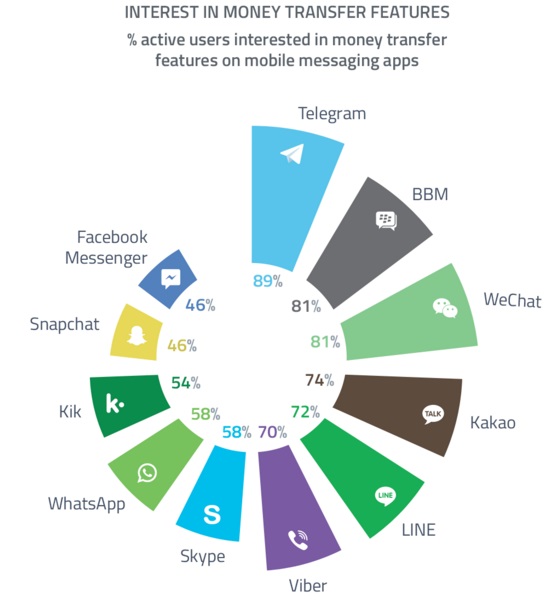
Telegram: Interest in Money Transfer Features % active users on BBM, WeChat, Kakao, LINE, Viber, Skype, WhatsApp, Kik, Snapchat and Facebook Messenger.
Wonders of Indian Famous:
( https://indianfamous.wordpress.com )
World Informative & Entertaining:
[ https://worldinformative.wordpress.com/ ]
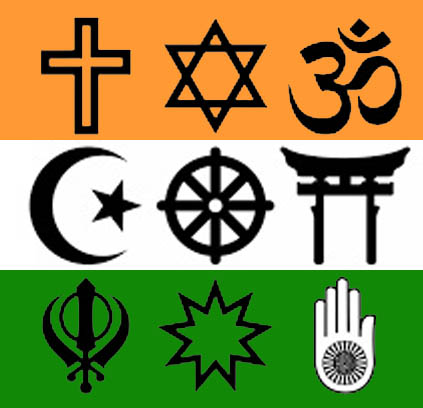
![]()
World Hindu Festivals
Festivals List of Current Year
Read more Hindu information, Pictures, Videos and Festival’s Recipes: https://worldhindufestival.home.blog
Join us on Channel of World Hindu & Health Instruction (@WorldHinduHealth)
Web Telegram in Browser : https://web.telegram.org/k/#@WorldHinduHealth
World Hindu Festivals
| Telegram Channel | Twitter | LinkedIn Page | Microsoft Teams | Other Social | WhatsApp Channel | Blogger |
All Guests Viewed since 2010: Counter:
